Dreaming of Seeing Your Poems in Print? Let’s Talk Budget.
You’ve poured your heart into verses, shaped raw emotion into rhyme, and now you’re ready to share your poetry with the world. But before your book hits the shelves (or the Kindle store), there’s one practical question every poet must face: How much does it cost to publish a poetry book?
Whether you choose self-publishing or traditional publishing, the costs can vary. From additional options to professional services, this guide breaks down the key expenses so you can plan your poetry book with clarity.
Let’s dive into what it really takes, financially, to bring your poetry to life on the page.
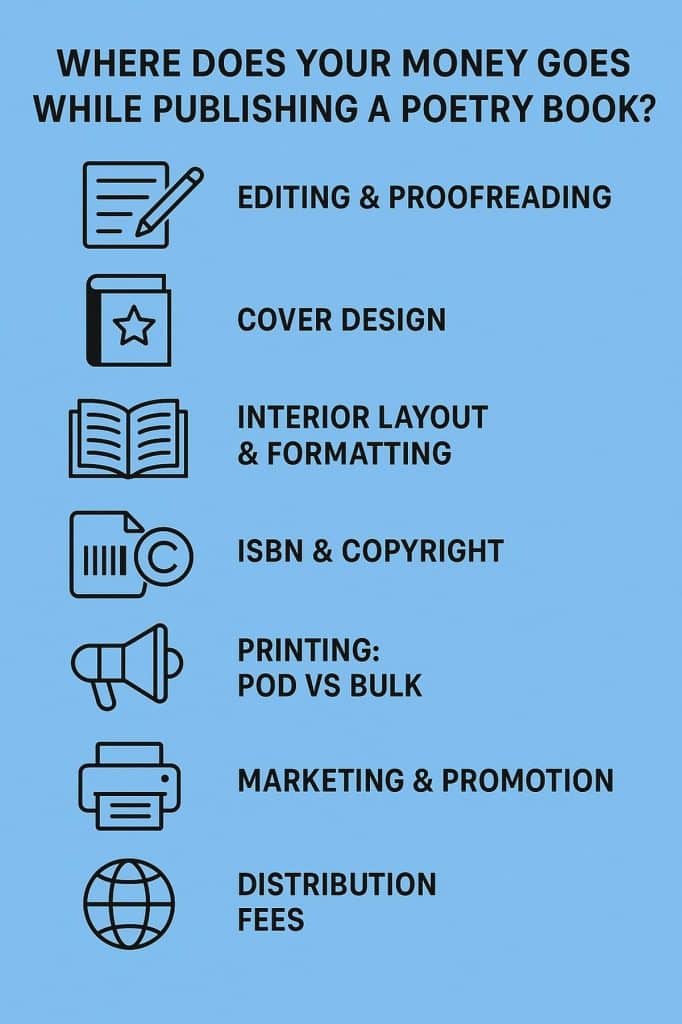
Publishing a poetry book is exciting, but it also takes planning, especially when it comes to cost. If you’re self-publishing, it might cost very little or stretch into the thousands, depending on how much support you choose.
That’s why it’s so important to ask early on: How much does it cost to self-publish a poetry book when you’re doing it all on your own?
Here’s a breakdown to help you understand where your money might go.
Even the best poems benefit from a second or third set of eyes. A professional editor can take your manuscript from good to great by making sure your verses flow, your message is clear, your grammar is correct, ensuring that you consider ordering a proof copy for your final review.
There are different types of editing to consider:
If you’ve attended writing workshops or have trusted writer friends, beta readers can also be a big help, and they’re usually free. But if you want a professional poetry editor, you’re likely looking at £150 to £400, depending on the length of your manuscript and how much editing it needs.
Also, if you’re wondering how much it costs to publish a poetry book that’s polished and reader-ready, editing is often your first and most crucial expense.
Need help polishing your manuscript or want to talk through your options? Reach out to the team at Ex Why Zed. We’d love to support your publishing journey.
Let’s be honest, people do judge books by their covers. A well-designed, eye-catching cover can grab attention before anyone even reads a word.
You can use pre-made templates or go DIY, but working with a professional designer gives you more control and ensures your cover reflects your poetry’s tone and appeals to your audience. For a high-quality custom cover, expect to pay anywhere from £80 to £400.
It’s a smart investment that helps your book look professional and get noticed, whether you’re selling online or in bookshops. And when considering how much it costs to self-publish a poetry book, this is an area where spending a bit more can make a big difference.
You can check out how If The Woods Whispered brought their creative vision to life, right down to the cover design and print details.
Want a print-ready, stunning cover? Request for an instant quote to get started on yours today.
The way your poems appear on the page is important. Line breaks, spacing, and layout affect how your words are read and felt.
You can use free tools like Kindle Create or formatting software, but if your poems have unique structures or if you want a polished look, hiring a formatter is a good idea. Formatting services usually cost between £40 and £250, depending on how complex your layout is and whether you’re formatting for print, eBook, or both.
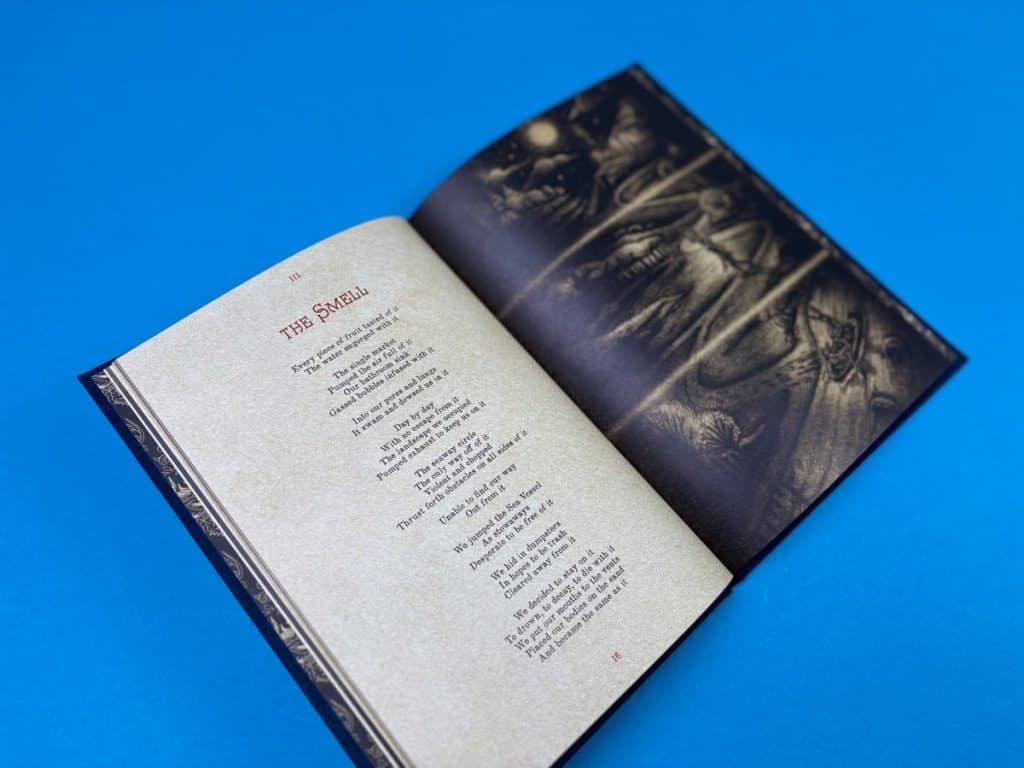
So when asking yourself how much does it cost to publish a poetry book, remember this step is essential if you want to create a seamless reader experience.
Need inspiration or a guide to poetry layout? Take a look at this video walkthrough to see how poetry and literary magazines are formatted and printed with care.
An ISBN is essential if you want to sell your book in online stores or bookshops. Amazon KDP offers a free ISBN, but buying your own ISBN in the UK gives you full control. A single ISBN costs £91, while a batch of 10 costs £170, which is helpful if you plan to publish more books.
In the UK, your work is automatically protected by copyright once it’s created, but registering it through a third-party service can give extra peace of mind. This usually costs between £30 and £50.
Printing is one of the biggest choices you’ll make. You can either print on demand or go for bulk printing.
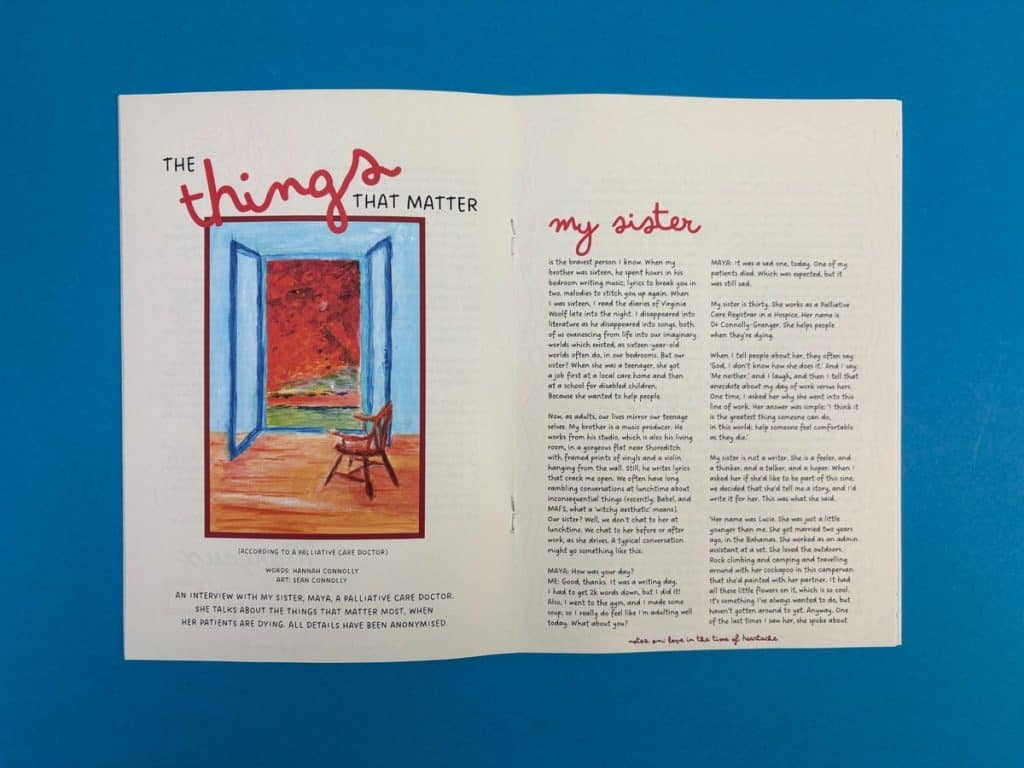
If you're leaning toward bulk printing, it's important to choose the right materials. Explore different book printing paper types to see what matches your vision, whether you want a soft matte texture or a vibrant glossy finish.
Great poems deserve readers, and marketing is how you find them. The good news is that you don’t need a huge budget to promote your book.
Start simple:
If you want to go further, you could spend:
Want to stand out visually? You can borrow a few creative launch ideas from this poetry-art book case study, especially when planning print materials or event promotions.
Getting your book into readers’ hands also involves distribution platforms. Each one has its own fee structure.
Compare the options based on your goals, whether that's wide distribution or simply getting your book out quickly and affordably.
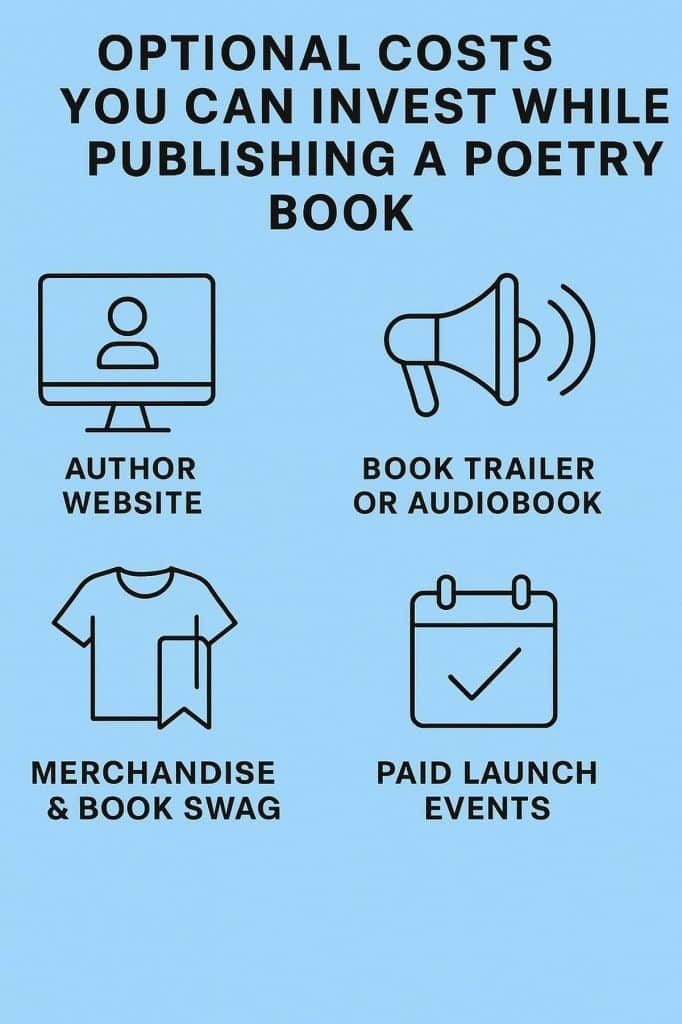
Once your poetry book is ready, a few thoughtful extras can really help you stand out and connect with readers in creative ways. These aren’t essential, but they’re great for building your brand and growing your audience.
A simple, well-designed website acts as your digital home. It showcases your poetry, tells your story, and gives readers a place to learn more about you. Add a blog or updates, link your professional social media accounts, and make sure to use basic SEO so new readers can find you online. It also helps attract literary agents and reviewers.
Want to bring your poems to life? A short book trailer with visuals and voiceover can quickly grab attention on social media. An audiobook version lets readers experience your work in a fresh, emotional way, perfect for performance-based poetry.
Think bookmarks, tote bags, or notebooks that match your book’s theme as part of your marketing strategy. These can be great giveaways at events or incentives for pre-orders, creating a great deal for your audience. Not only do they make your book more memorable, but they also help promote your personal brand.
Hosting a launch party, poetry reading, or bookstore event is a fun way to celebrate your release and meet readers face-to-face. Sending press releases about your event can also help promote it to a wider audience. Costs usually range from £150 to £400, depending on the size and venue. Partnering with a literary journal or indie bookshop can help bring in a built-in audience.
These extras aren’t must-haves, but if you have room in your budget, they can boost your visibility, help you reach new readers, and make your poetry journey even more memorable.
When you're ready to begin, place your print order here and we'll bring your poetry book to life with quality finishes and expert service.
So, what’s the best path for your poetry: self-publishing or traditional publishing? The answer really depends on how much control you want and what your goals are.
Self-publishing gives you full creative control and higher royalty rates. You decide everything from the cover to the launch date. But you'll also need to invest in editing, design, and marketing yourself. For printing, UK-based services like Ex Why Zed offer fast, professional options designed for indie authors.
Traditional publishing, on the other hand, handles most of that for you. Agents and publishers take care of editing, cover design, distribution, and promotion. It can be a great option if you want to see your book in shops and don’t want to worry about upfront costs. The trade-off? Less control and a longer timeline.
If you're a first-time poet who wants flexibility and fast results, self-publishing might be the better fit. And if you're still wondering how much does it cost to self-publish a poetry book, keep in mind it’s entirely scalable, you can start small and build from there.
Either way, the goal is the same: getting your poetry into the hands of readers who’ll love it.
Also, for poets seeking a professional alternative to Amazon, Ex Why Zed offers an excellent self-publishing path tailored for indie authors.
If you’re thinking of going the self-publishing route for the first time, here’s a little tip: who you print with matters. You’ve poured your heart into your poetry and it deserves to be printed with the same level of care and attention.
That’s where Ex Why Zed comes in.
We’ve helped countless poets, authors, and creatives turn their manuscripts into beautifully printed books. Whether you’re printing 30 copies or 300, we’ll guide you through every step—from choosing paper stock to finalizing the spine width—so your book looks and feels exactly how you imagined (maybe even better).
Here’s what our verified buyer Lindsay had to say about working with us:
“Quick, friendly and personal service! They really helped me achieve better than I envisioned. Thank you.”
Curious about what it might cost? Get a quick quote here and let’s make something beautiful together.
Publishing your poetry book is a big deal. It’s not just about printing pages. It’s about sharing your voice with the world. And like any creative project, it’s worth taking the time to plan, especially when it comes to your budget.
From editing and design to formatting, marketing, and everything in between, the costs can add up if you’re not prepared. But when you know where your money is going, you stay in control.
That makes the entire journey smoother and less stressful. Whether you’re doing it yourself or working with professionals, having a clear plan helps you make smart choices.
Your poetry deserves to be seen, held, and remembered.
Publishing costs, including printing costs, are not the same for everyone. There is a big range in the pricing. That is one way to publish your book without spending much money. But many people spend from £372 up to £3723 or more. The price will go up if you want editing, marketing, or printing extras.
Self-publishing, especially for a paperback, can cost less money. If you are new to publishing and want to decide things for yourself, it’s helpful to understand how much it costs to self-publish a poetry book so you can plan effectively. This helps a lot when it comes to how you get royalties on your book. If you go with traditional publishing, they pay for things first, but they also keep a bigger part of the sales.
Yes, it’s possible to publish a poetry eBook without spending any money. There are free tools available for formatting, and some platforms even offer free ISBNs. These DIY publishing methods make it easy to get your work out into the world at no upfront cost. You can also explore digital publishing sites that allow you to distribute your eBook globally without charging fees. This is a great option if you're trying to reduce how much it costs to publish a poetry book or keep self-publishing costs as low as possible.
You can save money by asking trusted readers to give feedback on your manuscript for free. You can format your book on your own using free online tools instead of paying someone. Some publishing platforms also offer free ISBNs, which helps reduce costs. Use social media to promote your book without spending on expensive ads. You can also connect with local bookstores to reach more readers. With a bit of planning, it’s possible to publish your poetry book without spending too much.
Absolutely! Publishing poetry books helps poets reach more potential readers. You can share your writing with people in a niche group or a wider group. There is a sweet spot where your poems connect with those who want something that speaks to their feelings or love of art. In today’s world, it is easier than ever to meet your publishing goals with the many tools out there.
The number of poems you need to include will change based on the type of book you are making. In most cases, poetry books have between 20 and 60 poems. This amount helps keep a good balance between your style and keeping the reader interested. A great way to think about your book is to remember to consider your target audience, your niche, and your publishing goals. The quality of your poems is more important than how many are in the book when you want to make a strong impact with your words.
Publishing poems as a first-time author can be done using platforms like Ex Why Zed. You do not always need literary agents or big traditional publishers to get your poems out there. Many literary agents and publishers may ask you to send your poems to literary journals or other books first. This helps you build your name in the world of publishing, but it can take extra time and effort.
"Poetry is when an emotion has found its thought and the thought has found words." – Robert Frost
If you’ve ever felt something so deeply that you had to write it down, you’re already on your way to being a poet. And maybe now, you’re thinking about taking the next step, starting your own poetry collection.
It might feel like a big task, but it’s a meaningful one. Whether you’re collecting old poems or writing new ones, creating a poetry book helps you grow and connect with readers.
You don’t need to be an expert. You just need your words, your feelings, and the courage to begin. So, are you ready to start your poetry collection? Let’s take it one step at a time.
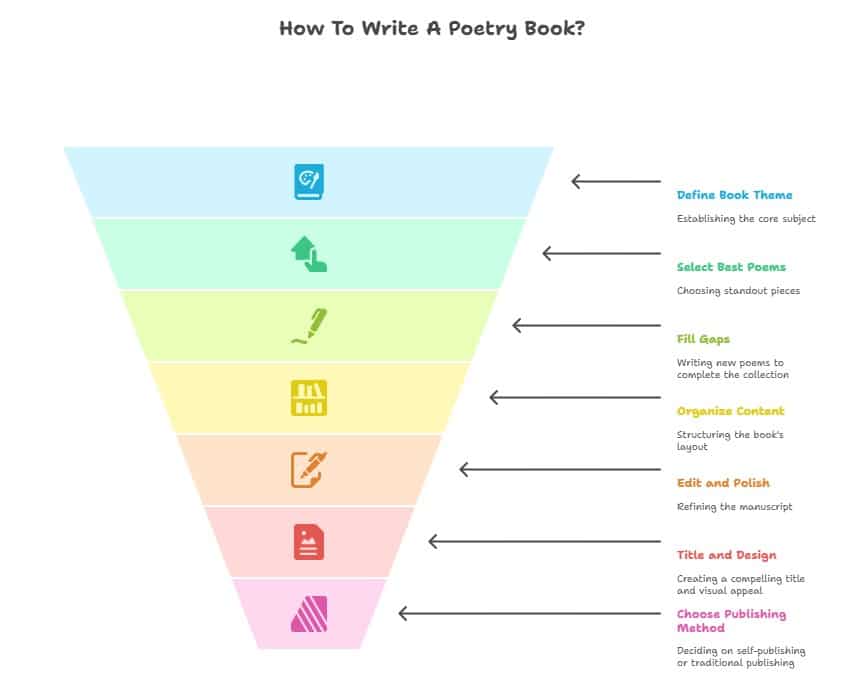
Starting isn’t as hard as it seems. Begin with a regular writing habit, write new poems or revisit old ones. The more you write, the more your collection will grow.
For example, poet Rupi Kaur began by sharing poems on Instagram. Her first self-published book Milk and Honey sold over 2.5 million copies worldwide and spent more than a year on The New York Times bestseller list.
Reading other poets also helps. It sparks ideas, sharpens your style, and shows you new ways to express yourself. Now, let’s walk through the next steps to build your poetry book.
The heart of any poetry collection lies in its theme. So before you dive in, take a moment to think: what do you want your book to say?
Is it about love? Strength? Nature? Or maybe your own personal journey? Picking a subject gives your collection a clear direction. It ties your poems together and helps your book feel like one complete piece rather than just a bunch of random poems.
Example: If you're writing about nature, your poems might explore the changing seasons, the cycle of life, or how people are connected to the world around them similar to Mary Oliver’s A Thousand Mornings, which meditates on simple outdoor moments.
Of course, you don’t have to stick to a strict theme. But having something like a story, a mood, or even a certain style that links your poems together can give your collection more shape and make it more memorable for readers.
Choosing the right poems for your collection is a big step and an important one. Go with the pieces that really stick with you, the ones that show your voice and style the best.
As you put your poems together, think about what each one is saying and how much emotion it carries. This helps your collection feel more connected and meaningful.
You might have to leave out some poems you like, and that’s totally okay. It’s all part of the process. Take this time to shape and strengthen your work. The more focused and powerful your collection is, the more it will speak to your readers.
Even the best poetry collection might need a few more poems to fill in the gaps or strengthen the theme. Take a good look at your manuscript are there parts that feel a bit thin or disconnected? Maybe a certain emotion, viewpoint, or style is missing.
Try writing new pieces to fill those spaces. Play with different forms like sonnets, free verse, or even a new tone to add depth and variety.
Just remember to stay true to your main theme. Each new poem should add something meaningful and help tie the whole collection together. Once you’ve got everything, you can start thinking about the best order for your poems.
Arranging your collection of poems takes a bit of thought. Start by looking at how your poems connect- do they share a theme or tell a story as they go along? Think of your collection like a book, where each poem flows into the next, almost like chapters.
Poet Ocean Vuong’s debut, Night Sky with Exit Wounds, is known for its intentional flow. Each poem builds emotional tension and leads into the next like a quiet story.
Choose a strong opening poem, something that grabs the reader’s attention right away. And don’t forget the ending! Your last poem should leave a lasting impression, something that sticks with the reader after they’ve finished.
And, if you ever need a little extra clarity on design, publishing, or promotion, Ex Why Zed’s resources are a good place to revisit.
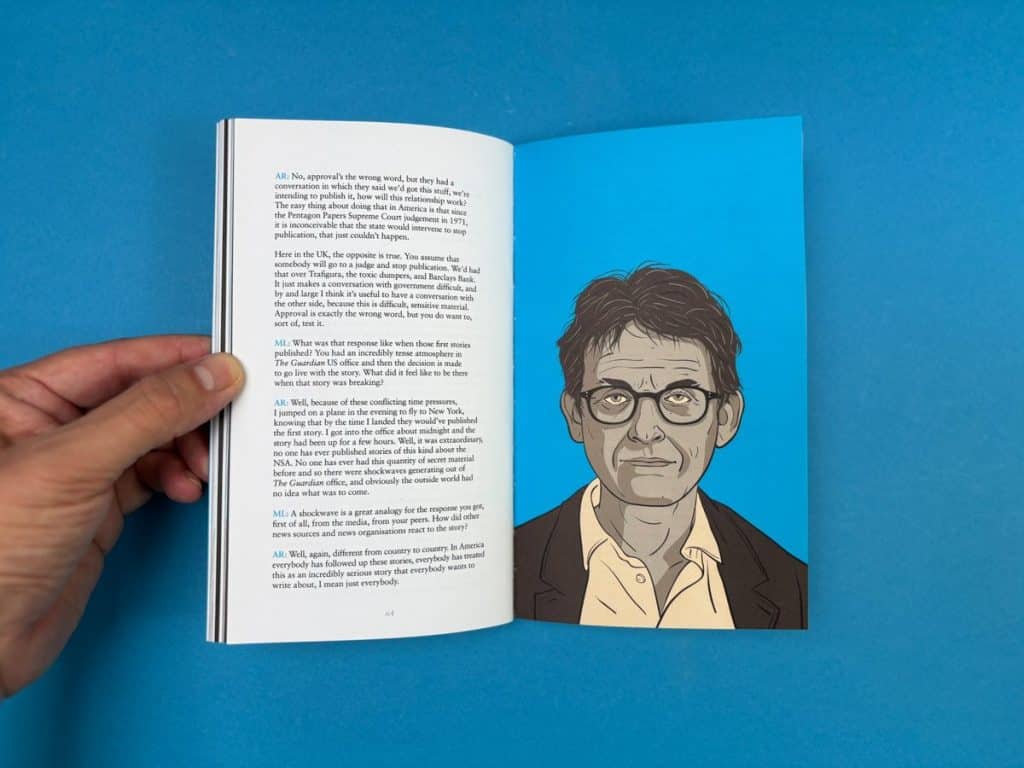
Editing is a key step in turning your poetry manuscript into a polished book. Start by going through each poem carefully. Check your grammar, line breaks, and imagery. Cut out anything that feels unclear or unnecessary.
Then, look at the collection as a whole. Does the order make sense? Do the poems support your theme? You might find some poems need more work or even need to be removed.
Before publishing, create a proof copy. This helps you catch layout issues, formatting errors, or any lines that went missing. Take your time with this step. It’s all about making your collection the best it can be.
And once everything feels right, you’ll be ready for one final task: choosing a title that truly reflects your poetry collection.
Want to learn more about printing options? Here's a useful guide on the book printing process, from file prep to choosing paper and finishes.
The title of your poetry collection really matters. It’s the first thing people see, and it should spark interest. You want something that feels true to your work and makes people curious to read more.
You could name your book after your favorite poem, or pick a line or image that captures the heart of your collection. Just try to avoid overly common titles like "Selected Poems" or "Anthology of Verse". They don’t say much and won’t help your book stand out.
A strong title can leave a lasting impression. It should stir a feeling or paint a picture in the reader’s mind.
Take your time with it. Jot down ideas, test out different titles, and don’t be shy about asking other poets for feedback. The right title will reflect your theme and tone, and once you’ve got it, you’ll be ready to think about the cover design and overall look of your book.
Your poems may be powerful but it’s the book cover that gets people to stop and take a look.
Think about the feeling behind your collection. Is it soft and emotional? Bold and loud? Calm and reflective? Your design should match that vibe. Whether you go for a minimal look, vibrant art, or a quiet, moody photo, your cover should reflect the heart of your poems.
Pick an image that stands out but also feels true to your writing. It could be abstract art, a photo that speaks to your theme, or even something inspired by a specific poem. For authors handling the visuals themselves, Ex Why Zed can also help with design decisions.
At the end of the day, a great cover doesn’t just look nice it adds meaning, tells part of your story, and makes readers want to see what’s waiting inside.
Choosing how to publish your poetry collection is a big step—it can make a big difference in how people find and read your work.
If you go with traditional publishing, you’ll usually get some support with editing, design, and getting the word out. Your book might even end up in big stores. The downside? It can take time, and you’ll need to submit your work to publishers or enter contests.
Self-publishing is a great option if you want more control. You get to decide how your book looks, from the cover to the layout. Platforms like Amazon KDP or Ex Why Zed make it pretty easy to publish on your own.
To get a full picture of your self-publishing options, revisit this list of self-publishing tools. Also, don’t forget the importance of an ISBN. It helps your book get listed in bookstores, libraries, and online retailers.
Once your poetry collection is out in the world, this is when the real fun starts. This is your time to connect with people through your writing.
Make the most of social media to talk about your book with fans and other poets. Share posts that grab attention. You can do a virtual reading or hold a simple online event. Try running some easy promotional ideas too.
Work with local bookstores to get your poetry collection out there. See if you can put your book in the store and maybe set up a small event.
Not sure where to start? This guide on how to launch a book on social media can help you plan your launch strategy and grow your audience.
As you work on your poetry collection, remember that your dream of becoming a published author might be closer than it seems. Whether you’re making final edits or exploring platforms like Amazon or IngramSpark, each step brings you closer to sharing your words with the world.
Enjoy the process. Stay active on social media, connect with other poets, and be part of the creative community.
These small actions can open unexpected doors. And one day, you might walk into a bookstore and see your own poetry collection on the shelf.
And when it’s time to bring your words to life in print, Ex Why Zed is a brilliant partner. From design support to professional printing, they make self-publishing feel personal, straightforward, and beautifully done.
So go ahead — take the next step. Your poetry deserves to be read.
Most full-length poetry books have about 40 to 70 pages with poems. Chapbooks have less, with about 20 to 40 pages. The main thing is to pick strong poems that make the book feel finished. It is not about having a set number of pages. Modern poets say it is better to choose good poems over having many of them.
Having a main idea helps make your collection of poetry stronger. It ties the poems together with the same subject matter or tone. You do not have to use a theme, but it helps your first book connect better with readers. When your poems have cohesion, your message can make more impact.
A preface for a poetry book is a short introduction where you share why you wrote the collection, what inspired it, and how readers can connect with the poems. Keep it personal, reflective, and brief.
It depends on your writing pace and goals. Some poets take a few months, while others may spend years refining their work. On average, it can take anywhere from 6 months to 2 years to write and polish a poetry book.
Start by editing and arranging your poems into a cohesive collection. Format the manuscript and design a cover either yourself or by hiring a professional.
Next, choose a platform then upload your files, set your pricing, and publish your book. After it’s live, promote it through social media, a website, or poetry events.
If you do everything yourself using free tools like Amazon KDP, it can cost £0. But if you hire an editor, designer, or pay for printing, it may cost around £100–£500+, depending on your needs.
You can keep costs low by starting small and investing more as your book gains traction.
You’ve done the hard part, written the novel, illustrated the panels, and edited until your eyes hurt. Now comes the bit no one warns you about: figuring out how much it’ll actually cost to get your book into readers’ hands.
Spoiler: there’s no flat fee. Whether it’s a gritty novella or a full-color graphic novel, the price tag depends on dozens of little decisions, paper type, ink quality, binding style, and how many copies you want. It can get overwhelming fast.
Let's break down what really goes into the cost of self-publishing and show you how to get pro-level results at a price that makes sense.
Self-publishing isn’t just a matter of writing “The End” and sending it off to print. Before your book hits shelves (or letterboxes), a few key costs tend to stack up, some obvious, some less so.
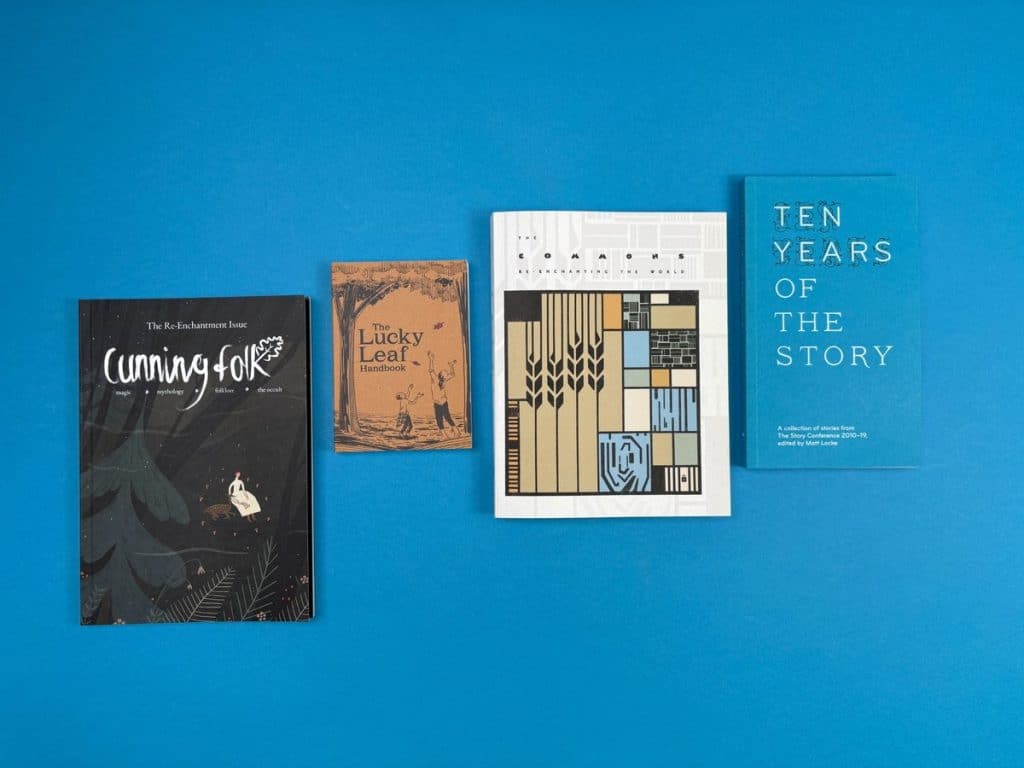
Here’s where most of your budget goes:
Then comes the actual printing, and that’s where things get more flexible.
Instead of a one-size-fits-all approach, you’ll need to think about your book’s trim size, page count, ink choices, and binding style. Some authors start with a short print run of 50 - 100 copies to test the waters; others go in with thousands of copies right away.
Either way, you’ll want a printer that’s used to working with authors and small publishers. Read more on how to evaluate these factors here.
More on actual print costs and where you can save, in the next section.
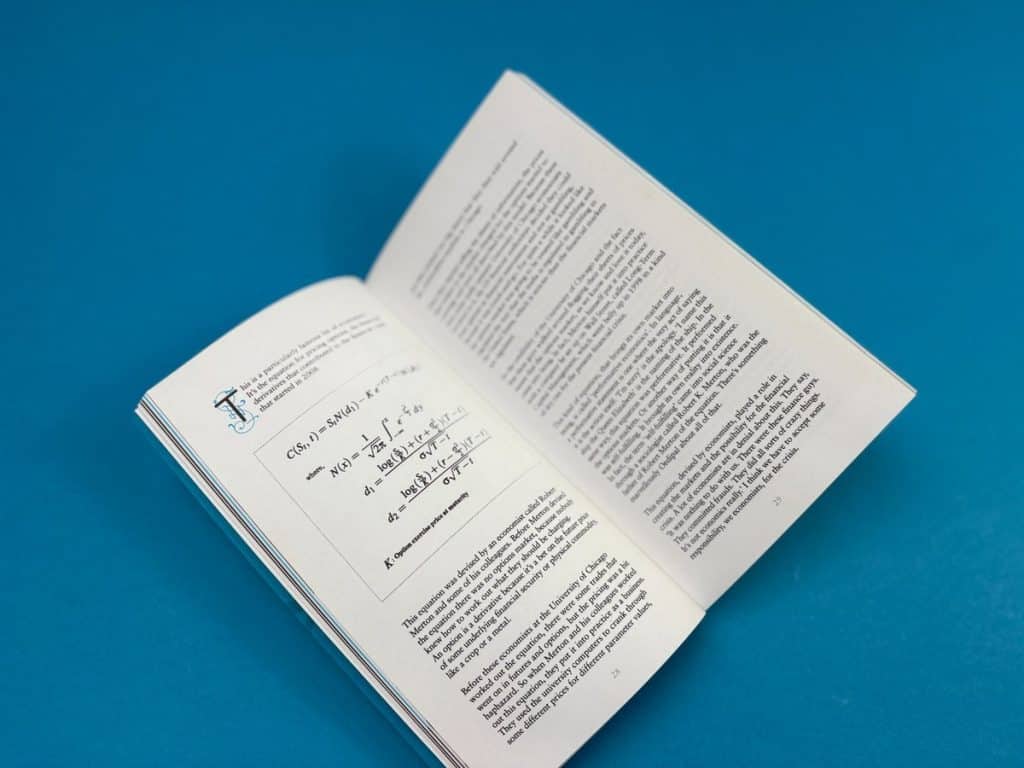
If you're hoping for a one-size-fits-all answer, here's the truth: printing costs aren’t that simple, and honestly, that’s a good thing.
There’s a lot that goes into pricing your book properly. Page count, color or black & white, paper stock, binding style, and how many copies you’re printing, every detail affects the final number. And while some printers let you punch in specs and spit out a quote instantly, printing a novel (or a graphic novel) isn’t the same as ordering business cards or tote bags.
You’ve spent months, maybe years, bringing your story to life. Do you really want to leave the final step to guesswork?
That’s why at Ex Why Zed, we don’t advertise set prices on our site. Instead, we start with a conversation. Tell us about your book, what it is, what it means to you, how you imagine it in someone’s hands, and we’ll help you make smart decisions from there. Our goal isn’t just to print your project. It’s to help you get it right.
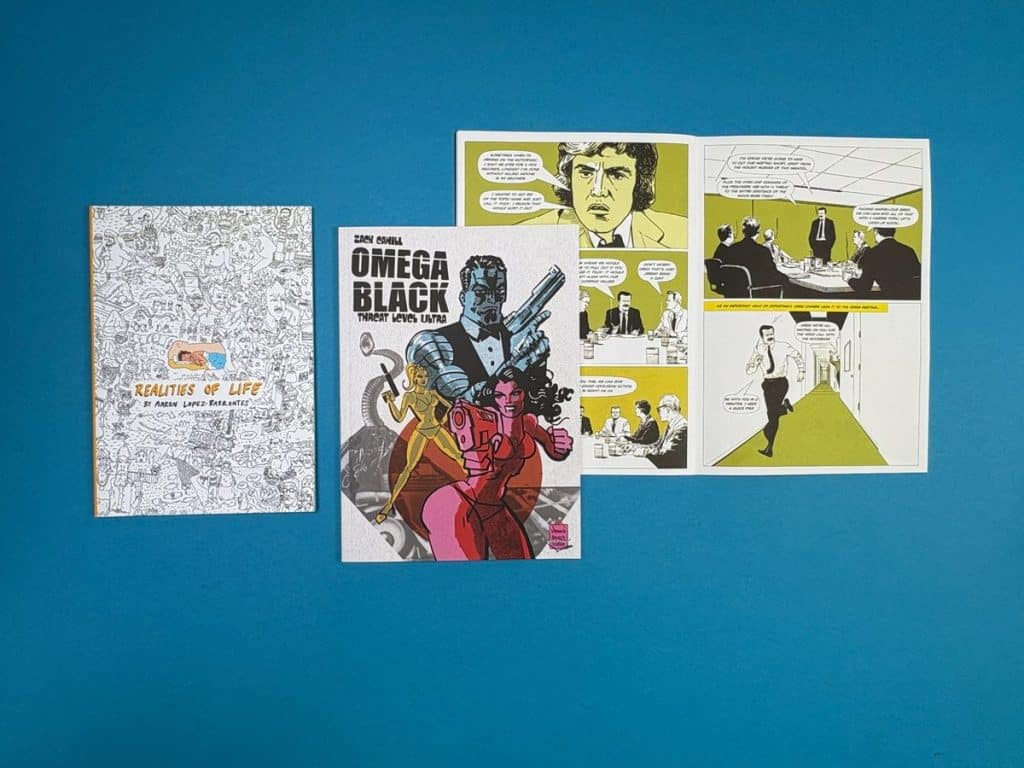
We get it, you still want ballpark numbers. Here’s a rough idea:
Publishing Task | Average Cost (GBP) | Notes |
|---|---|---|
Editing & Proofreading | £300 – £1,000+ | Varies by length, depth of editing (copy vs. developmental) |
Cover Design | £100 – £500+ | Higher for custom illustration or premium design |
Interior Layout | £50 – £300+ | Depends on type of book (text-heavy vs. graphic-rich) |
Printing (Per Copy) | £3 – £12 | Lower for B&W novels, higher for full-colour graphic novels |
ISBN (UK) | Free – £89 | Free ISBN available via Nielsen (UK) or buy your own |
Book Marketing | £100 – £1,000+ | Includes ads, promo materials, launch strategy |
|
Additional Fees | Varies | Shipping, reprints, or rush orders may add to the actual cost |
If you’re working with a budget in mind, let’s reverse engineer it. Say you’ve seen novels similar to yours selling for £8, and you’d ideally like to keep your printing cost under £3 per copy. Tell us the specs, maybe A5, 40 pages, and we’ll help you figure out the right quantity or tweak the materials to hit your goal.
It happens. There’s always a cheaper quote somewhere. But printing isn’t just about price, it’s about the experience. The quality of the paper. The responsiveness of the team. The confidence that what shows up in the post will match what you pictured in your head.
You’ve probably bought a coffee today that cost more than one down the road, just because you liked the atmosphere or the way they remembered your name. That’s not just convenience, that’s care.
That’s the difference we try to bring to print.
So if you do get a cheaper quote elsewhere, don’t write us off. Let us know. We’ll always do what we can to make it work, because at the end of the day, we’d rather you print with us than not print at all.
Before moving on to the next section, here's another short visual guide of what really goes behind the process for magazines, what determines our pricing, and how we do what we do 🙂
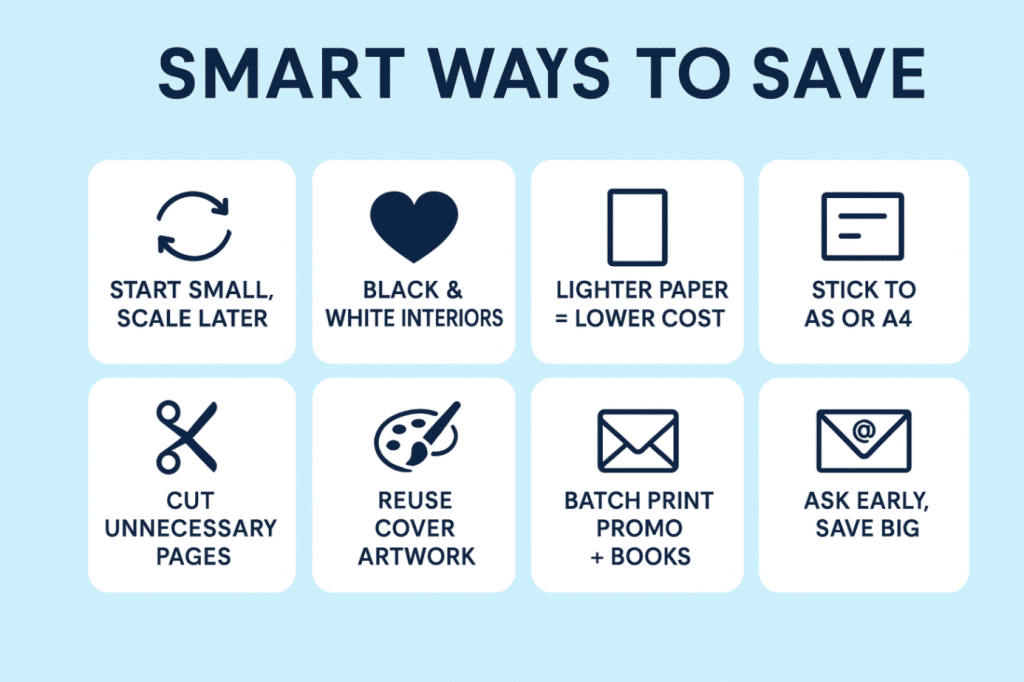
Printing a novel or graphic novel can add up fast. But cutting corners shouldn’t mean cutting quality. If you’re strategic with your choices, you can produce something beautiful without blowing the budget. Here’s how:
You don’t need to print 500 copies from the start. With Ex Why Zed, there’s no minimum, so you can print 10 or 20, see how they feel in your hands, test the market, and scale up once you’re confident.
→ Bonus: You can tweak the spec after your first run if you decide to make changes.
Full-colour printing looks fantastic, but it’s also one of the biggest cost drivers. Many graphic novelists start with greyscale interiors and a vibrant colour cover, still striking, but far more affordable.
Yes, 200gsm uncoated paper feels lush, but if your book is text-heavy, 100–120gsm is often more than enough.
At ExWhyZed, we’ll guide you through the right weight and finish for your project without pushing you toward the priciest option.
Custom trim sizes often mean more waste and higher costs. Formats like A5 and A4 are efficient, easy to ship, and still offer plenty of design flexibility.
→ Tip: A5 tends to be the sweet spot for indie novels and zines.
Each page you add increases the cost, especially in colour. If you're on a budget, consider editing for brevity or trimming down extras like title pages, blank spreads, or appendices that don’t serve the story.
If you’re planning to promote your book, don’t reinvent the wheel. Use the same artwork and fonts from your cover to print bookmarks, postcards, or flyers. ExWhyZed can batch these together in one order, saving on setup costs and delivery fees.
Seriously, one 10-minute email can save you hours (and hundreds of pounds). Our team at ExWhyZed can suggest smarter specs, catch file setup issues before they become expensive mistakes, and help you work toward your price-per-copy goal.
No pressure, no jargon.
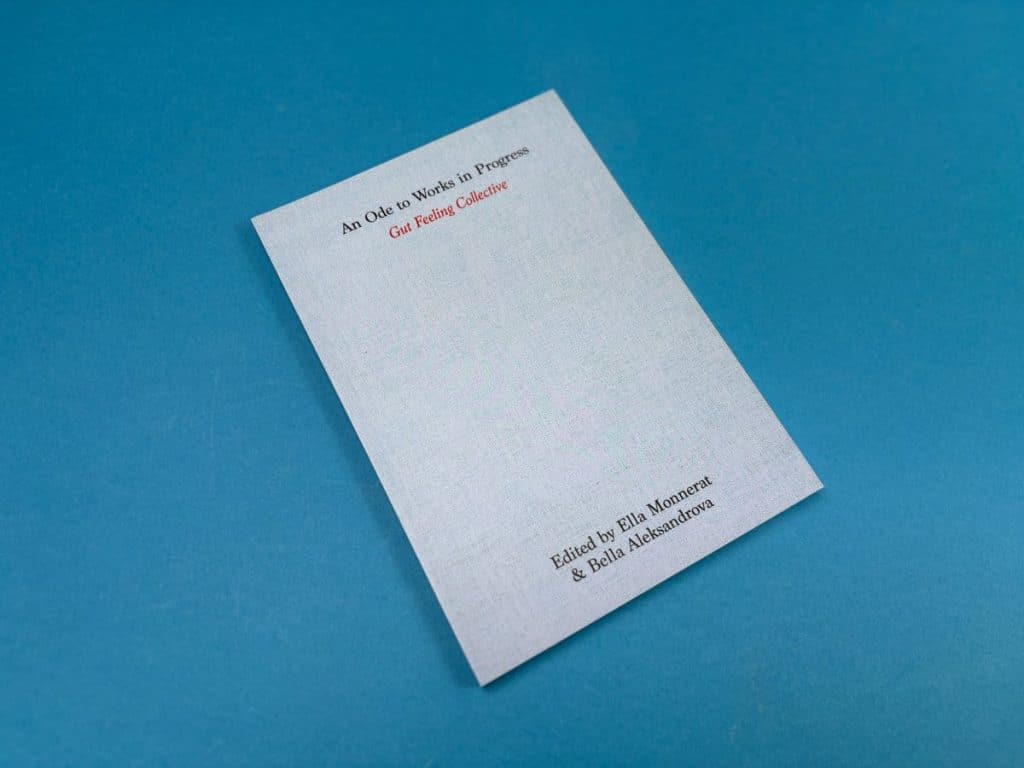
When Gut Feeling Collective set out to publish An Ode to Works in Progress, they weren’t just printing a mass-market paperback. It was 172 pages of raw, reflective poetry that needed to feel as intentional in hand as it did on the page.
Printed at A5 size with black ink on 115gsm silk pages and a 250gsm silk cover, matt-laminated for a soft, elegant finish, the book radiates quiet confidence.
No gloss. No gimmicks.
Just a monochromatic palette and perfect binding that lets the content take the spotlight, and lays flat for easy reading.
Ella, leading the project, wanted the spine to match the cover, visually seamless, title included.
ExWhyZed worked closely to finesse the 9mm spine design, ensuring it aligned exactly with the collective’s vision. It’s the kind of detail most printers brush past. We didn’t.
Late-stage change? No problem.
When the team needed a page reprint, we didn’t blink, just quoted, adjusted, and delivered. Even when the courier missed a drop, we stayed in the loop until books were in hand, launch-ready.
“Thank you for being so helpful and adaptable throughout. You really made the project feel taken care of.” — Ella, Gut Feeling Collective
You're ready. Here’s how to get your novel or graphic novel into print — no guesswork, no back-and-forth.
Whether you're printing poetry, fiction, or a full-color graphic novel, self-publishing gives you something traditional publishing often can’t control.
You choose the book cover, the format, and the finish. You decide whether to invest in developmental editing, hire a book designer, or handle layout yourself. And when it comes to promotion, you steer your own marketing strategy, from targeted social media posts to old-school word of mouth.
There are different types of success in book publishing. If yours starts with a great idea and a few boxes of books delivered to your door, we’re here to make that journey smoother, smarter, and creatively yours.
The answer to "how much does it cost to publish a graphic novel" can range from £800–£2,500 depending on editing process depth, book cover design, and marketing costs. Hiring a professional editor improves sentence structure and increases your chances of success in the publishing industry.
Yes, with careful planning. The average answer to "how much does it cost to publish a novel" varies, but digital printing and streamlined interior design keep the publishing process affordable, especially if you only need a few copies of your book.
You can use a free ISBN or register your own ISBN in the United States. Either works, but having your own ISBN gives you full control over your book marketing and publisher listing.
The answer to "how much does it cost to make a graphic novel" internal pages and back cover design varies by type of book. Expect to pay £100–£300 unless bundled with a full book cover package. Always check for additional fees during the publishing process.
Start with the final product in mind. The best way to control actual cost is to focus spending on essentials like editing, front cover, and book marketing, then scale copies of your book as your audience grows.
Printing your novel for the first time is a huge accomplishment. Whether you want to hold your story in your hands, gift it to friends, or distribute it for sale, seeing your words in print is incredibly rewarding. But if you’re a first-time author, it can be difficult to know where to begin.
Fortunately, you don’t need a publishing contract or a warehouse full of books to print your novel. With creative printing specialists like Ex Why Zed, the process is more accessible, flexible, and high-quality than ever. In this guide, you’ll learn exactly how to print a novel from start to finish, complete with formatting tips, design advice, and step-by-step instructions tailored for beginners. Let’s get started!
Whether you're self-publishing or printing a single copy for personal use, follow these steps to ensure your book looks clean, professional, and ready for readers:
Before you even think about printing, your manuscript needs to be polished and complete. That means:
The size and layout of your book play a huge role in how it looks and feels. Common trim sizes for novels include:
You’ll also need to set the right margins and line spacing. Interior formatting tools can make this easy, especially if you're new to layout design. These services are also offered at affordable costs.
Make sure you:
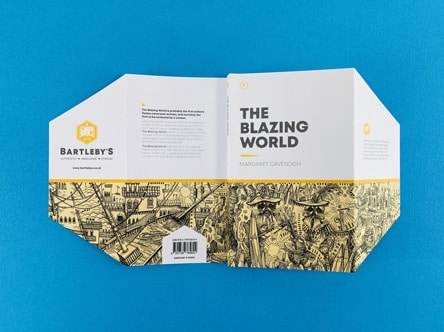
Your cover is the first impression your book makes, and for printed novels, it needs to meet technical specs. A print-ready cover includes:
You can use free tools like Canva or professional software like Adobe InDesign to design your cover.
Design tips:
If you're new to design or want a polished, industry-standard look, we offer expert book cover design support. Our creative team produces stunning, print-ready covers tailored to your book’s tone, genre, and personality.
From proper formatting to premium finishing touches, we ensure your cover is not only visually striking but fully optimized for professional printing.
Paper quality directly impacts how your finished novel looks, feels, and holds up over time. The right choice depends on your book’s genre, printing goals, and reader experience.
For most standard books, white or cream uncoated paper works well for the interior. Cream offers a soft, classic look that’s easy on the eyes, making it perfect for fiction. White pages, on the other hand, give a sharper contrast and are often preferred for nonfiction or books with visual elements.
If your book is photo-heavy or illustrated, go for matte or glossy coated paper to enhance image clarity and color vibrancy. As for interior paper weight, standard paperback books typically use 50–70 lb. (75–105gsm) stock. For a more premium or durable feel, consider heavier weights like 100–170gsm.
When printing with Ex Why Zed, you’ll have access to a range of high-quality paper option,s including House Uncoated, Silk, Gloss, and Evolution Uncoated. We offer paper weights ranging from 100gsm to 350gsm, ideal for creating a professional finish. Interior pages typically use up to 170gsm, while covers can go up to 350gsm. However, we generally recommend a maximum of 300gsm for covers to ensure the perfect balance of durability and flexibility.
Not sure which paper to choose for your novel? Read our blog on choosing the right book printing paper types for a detailed breakdown.
Once your manuscript and cover are ready, the next step is choosing how you want to bring your novel into the real world. The best printing method depends on your goals, whether you're creating a small batch for personal use, preparing for a book launch, or producing high-quality copies to sell.
Here are the main options:
If you're looking for professional results, personalized support, and a range of customization options, Ex Why Zed is an ideal choice. Whether you're printing a single proof copy or a full run of novels, our expert team ensures exceptional quality and fast turnaround, without sacrificing the creative control you deserve.
Services like Amazon KDP print each book only when an order is placed, making them a popular print-on-demand (POD) option. They’re convenient for authors who don’t want to handle inventory or upfront costs.
Offset printing is a traditional method used for high-volume book production. It’s ideal for authors planning bulk orders for retail distribution, events, or direct sales.
If you plan to sell your novel, whether online, in bookstores, or through booksellers and distributors, you’ll need an ISBN (International Standard Book Number). This 13-digit identifier helps retailers track and catalog your book, and it's a key part of professional publishing.
Some print-on-demand platforms, such as Amazon KDP, offer free ISBNs, but these typically list the platform as the publisher, which may limit your publishing control or options in the future.
If you want to retain full ownership and be listed as the publisher of record, it’s best to purchase your own ISBN. After securing one, you can easily generate a scannable barcode using a free online tool and add it to the back cover of your book during the design stage.
Note: If you're printing your novel for personal use, gifts, or small private runs, an ISBN isn’t required.
With your proof approved, it’s time to bring your novel to life in print. Whether you're printing a few copies for personal use or preparing for a full book launch, this step ensures your story is ready to share.
With your files approved and copies ordered, it’s time to share your book with the world. Whether you're selling online, hosting a book launch on social media, or gifting copies, this is the moment your novel becomes a published reality.
Ex Why Zed makes distribution simple, with high-quality printing, secure packaging, and support for bulk orders or repeat runs. From local events to online sales, you're ready to get your story into readers’ hands, beautifully printed and professionally finished.
Ready to see your novel in print? At Ex Why Zed, we specialize in turning manuscripts into beautifully printed books, without the overwhelm. From stunning covers and premium paper to expert support and fast turnarounds, we make the book printing process smooth from start to finish.
Whether you're printing a single proof or a full run for retail, our team is here to guide you every step of the way. With flexible order sizes, bookstore-quality results, and a real human on the other end of every email, you can print your novel with confidence.
Start your printing journey with Ex Why Zed today, and bring your story to life exactly the way you imagined. Get your quote today!
Printing your novel is a milestone worth celebrating. From formatting to cover design and final copies, each step brings your story closer to reality.
Whether you’re publishing for sale or sharing with others, the process of book printing can be simple and rewarding with the right support. Ex Why Zed is here to guide you every step of the way, helping you print a book that looks just as good as it reads.
You’ve written the story, now let’s bring it to life in print.
Yes! While this guide focuses on printing novels, many custom book printing services like Ex Why Zed also support printing memoirs, manuals, lookbooks, photo books, and more. Whether your project is fiction or nonfiction, there are options for books of all kinds.
Marketing is key. You can build an audience through social media, create your own website for direct sales, or explore online retail distribution channels to reach a wider readership. You can also bundle your print edition with an ebook version to increase visibility.
Turnaround times vary by printer, book type, and order size. At Ex Why Zed, production usually begins on the first printing day after your proof is approved. Depending on quantity and finishes, the estimated production time typically ranges from 3 to 7 business days plus shipping.
Shorter books can still be printed professionally at competitive pricing. Just keep in mind that some standard print book formats may require a minimum number of pages to support features like spine text or perfect binding. Ex Why Zed can help you choose the best layout based on your content.
Yes, you can print a full color paperback or hardcover novel, though it's more commonly used for children's books, graphic novels, or visual-heavy content. Be aware that the cost of printing is generally higher for color interiors than black-and-white.
As an emerging or established writer, self-publishing offers many opportunities to take control of your narrative literally. It allows you to navigate your literary journey in your style, traversing the publishing process without surrendering your rights or the majority of your royalties to a traditional publishing house.
However, self-publishing is not a path laden with roses; it comes with unique complexities that may seem daunting, especially to first-time authors. This comprehensive blog thus aims to dispel such apprehensions by providing an exhaustive self-publishing checklist.
By the end of this blog, you should be well-equipped to tackle all the challenges of self-publishing and emerge successfully as a published author.
We have crafted a meticulous checklist outlining a step-by-step roadmap to self-publishing success to ease your self-publishing journey. In the following sections, we will talk about the same.
Using tools like Grammarly or ProWritingAid, you can refine your manuscript yourself. This gives you control over the process, though catching errors and improving your writing may take longer.
Meanwhile, a professional editor enhances your manuscript by improving flow and consistency. While more costly, their expertise ensures your work is polished. If on a budget, consider feedback from a trusted friend before opting for professional help.
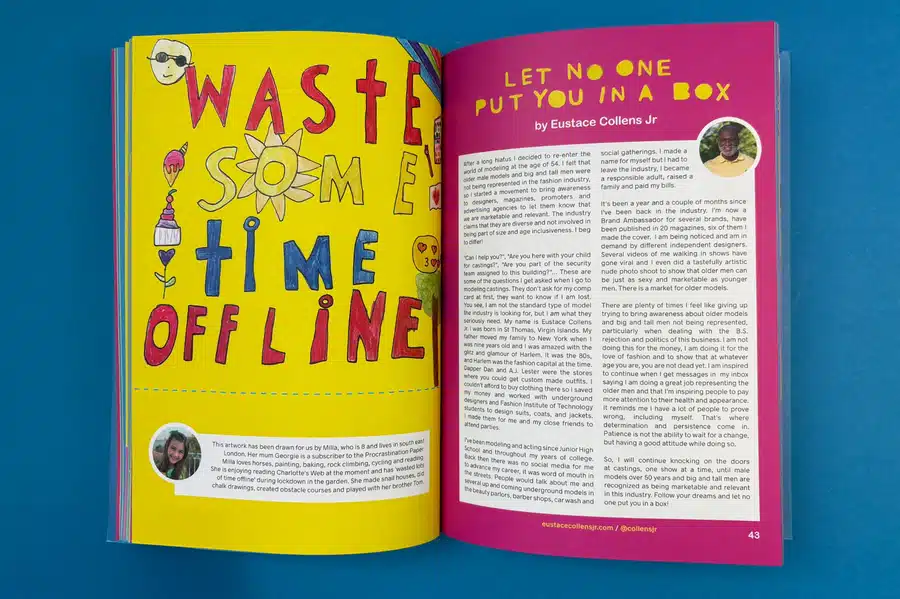
An author bio is essential for self-published authors, as it helps build credibility and fosters a connection with readers. Write your bio in the third person, highlighting your qualifications, achievements, and expertise related to the book's topic.
To make it more engaging, you can also add personal touches, such as where you're from, your hobbies, or interesting facts about yourself. Keep it professional yet approachable, and remember, your bio can be used not only in your book but also on your website, social media, and other platforms to introduce yourself to a broader audience.
Dedications add a personal and heartfelt touch to your book, usually placed after the copyright page. This is your chance to express gratitude to someone who provided support, motivation, or inspiration during your writing journey—whether it's a family member, friend, mentor, or even a public figure who inspired you.
Though optional, dedications make your book feel more personal and relatable. Whether it's an emotional tribute or a playful shoutout, dedications create a connection with readers, offering a glimpse into your world and making the book feel truly yours.
After the dedication page, the acknowledgments allow you to express gratitude to those who contributed to your book's creation. Unlike brief dedications, acknowledgments allow you to mention everyone who played a part—editors, designers, family, friends, early readers, and anyone who provided support or feedback.
Be specific and sincere about how each person helped. Thoughtful and genuine acknowledgments can foster a connection with readers and highlight your appreciation for those who made your book possible.
Seasoned author Stephen King once quipped, "You can't judge a book by its cover," but in the self-publishing world, most readers do! Hence, crafting a compelling book title and description, or blurb, is integral to engaging potential readers. Typically found on the back cover or in your print edition ebook description, your blurb acts as a mini-sales pitch, highlighting the most important things about your book.
A strong blurb grabs attention, offers a brief synopsis without giving too much away, and leaves readers eager to know more. Keep it between 100-200 words, starting with a captivating sentence and highlighting high-stakes conflicts. Include relevant keywords for SEO and target your ideal audience to create an effective marketing tool.
A copyright page is crucial in self-publishing as it establishes your ownership of the book's content, including your book description. Located after the title page, typically after your table of contents, it includes your ISBN, copyright notice ("Copyright © [year] by [Author Name]"), and legal statements like "All rights reserved."
You can also add publisher contact info, credits for the production team, and any necessary disclaimers. While it may seem small, a well-detailed copyright page is an important legal and professional step regarding copyright law.
A headshot is essential for connecting with your readers, offering a personal touch that complements your Author Bio and gives a face to your name. It adds credibility and is typically featured on your professional book cover or website. While DIY shots with a high-resolution camera can work, a professional photographer can capture the right tone, emotion, and personality.
Whether a close-up or full-length portrait, ensure your headshot reflects your true self. It should be more than just a picture—it's a glimpse into your world as an author and your unique journey.
Typography is crucial in enhancing the reading experience by improving readability. The right typeface draws readers in and makes reading easier, while poor choices can turn them away. Professionals often recommend simple, readable serif fonts like Caslon, Garamond, Jenson, Minion, and Palatino, known for their smooth, flowing lines.
However, matching the font to your book's mood and genre is essential. For example, a horror novel may benefit from a suspenseful serif, while a children's book might need a playful, fun font. Choose a typeface that best complements your content.
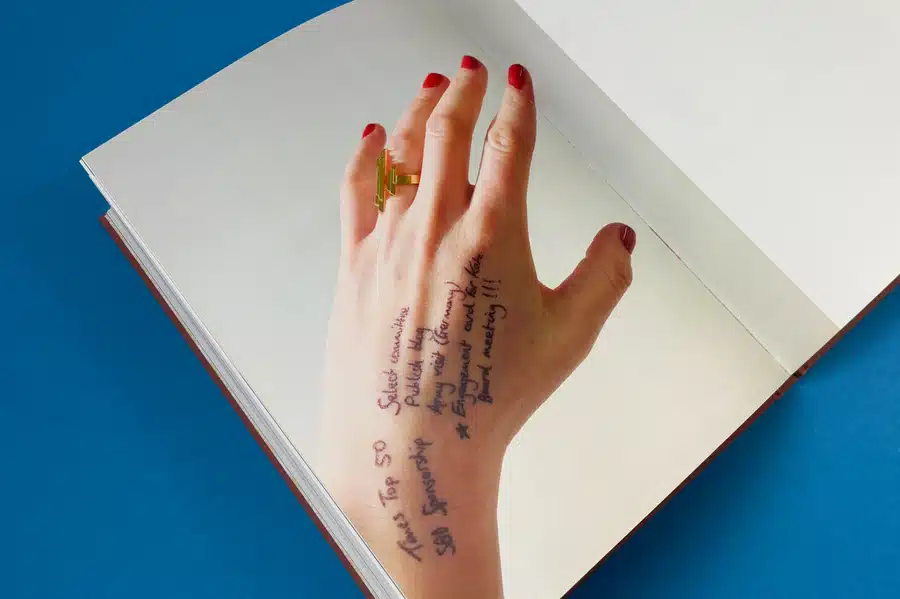
A well-designed book layout boosts readability and professionalism. Avoid widows, orphans, and runts for a cleaner appearance. In non-fiction, columns and tables improve data comprehension. For example:
| Chapter Name | Page Number |
| Introduction | 1 |
| Design | 11 |
| Production | 33 |
| Marketing | 47 |
| Conclusion | 65 |
Ensure images are properly placed to maintain a neat and professional look.
Designing your book's cover, including the back cover design and spine, is crucial in self-publishing, as it's often the first impression a reader has of your work. A visually striking book design can set your book apart in a crowded market, while a professional designer's design reflects the quality of your content. Ensure the cover aligns with your book's genre and tone, capturing the essence of your story or message.
Conversely, the spine should include your book title and author name for easy identification on bookshelves or digital libraries. Whether you hire a designer or create it yourself, ensure it's eye-catching, clear, and reflective of your book's core theme.
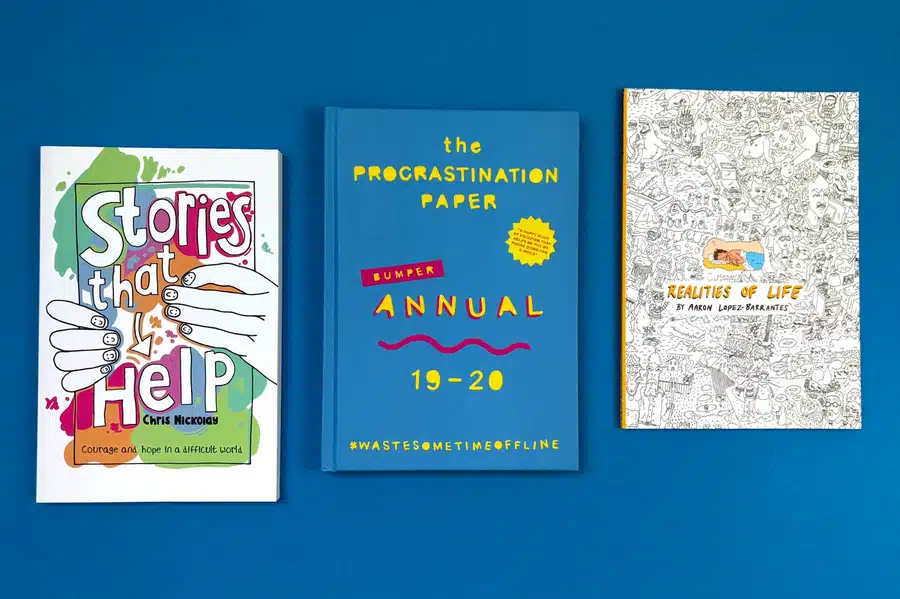
Acquiring an International Standard Book Number (ISBN) is essential for self-publishing, giving your book a unique identity in the market. It's essential if you plan to sell in bookstores, libraries, or on retail platforms.
While services like IngramSpark offer free ISBNs, buying your own is recommended if you plan to publish in multiple formats (print, ebook, audiobook). , including on platforms like Kobo. and Kindle Direct Publishing. Besides, while eBooks on platforms like Amazon KDP and Google Play don't require an ISBN, having one enhances your book's professionalism and marketability.
For an ISBN in the UK, you should go directly to https://www.nielsenisbnstore.com/ who are the UK suppliers. On their site, you secure the ISBN, then download the barcode which can be added to your artwork.
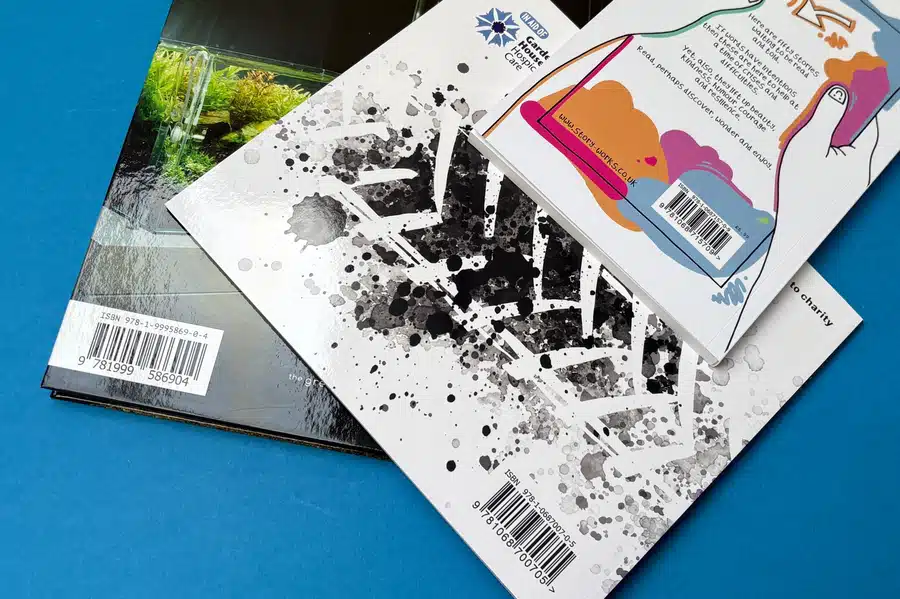
Crowd validation is crucial in today's market, where social proof drives success. If this is your first book, book reviews serve as testimonials, building credibility and encouraging potential readers to invest in your book. To gather early reviews, reach out to fellow authors, readers, or beta readers within your genre. You can also tap into your existing audience via emails or direct messages for support.
Another key strategy is to create a launch team of dedicated followers on Instagram who help generate buzz and write reviews on launch day. Focus on honest feedback that highlights the value of your book and build excitement around its release, aiming to get it noticed on the bestseller lists.
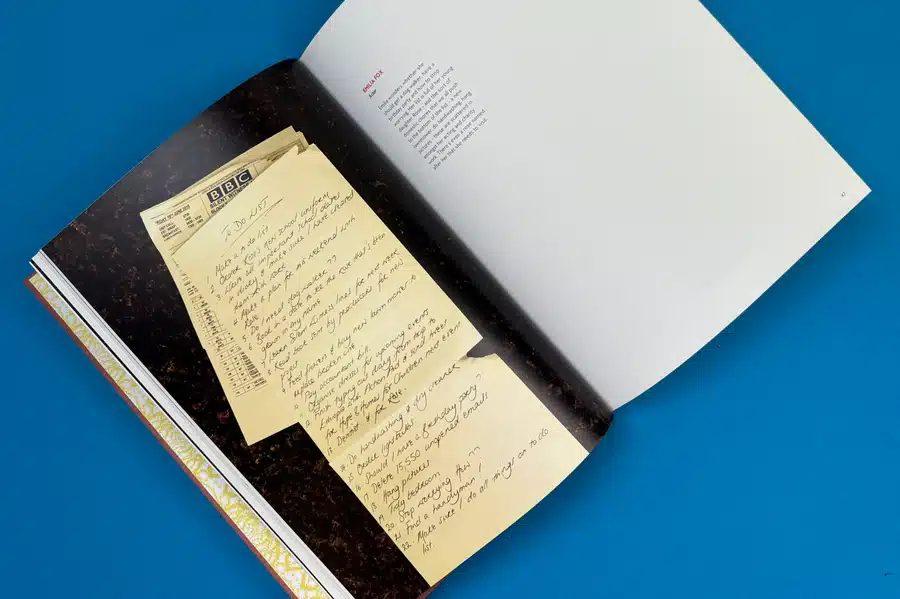
Structuring your book is akin to planning a meaningful journey for your readers. A meticulously crafted structure guides your writing process and structures the structure of your story to enhance the reader's experience, making it engaging and effortless. The clarity of your structure is reflected in the simplicity with which you convey your story or ideas.
A cheat sheet can be your secret weapon in efficiently planning your content. This organized table detailing your chapters or sections, key points, and word count helps you stay focused, streamline your writing process, and ensure a logical flow of ideas in your manuscript.
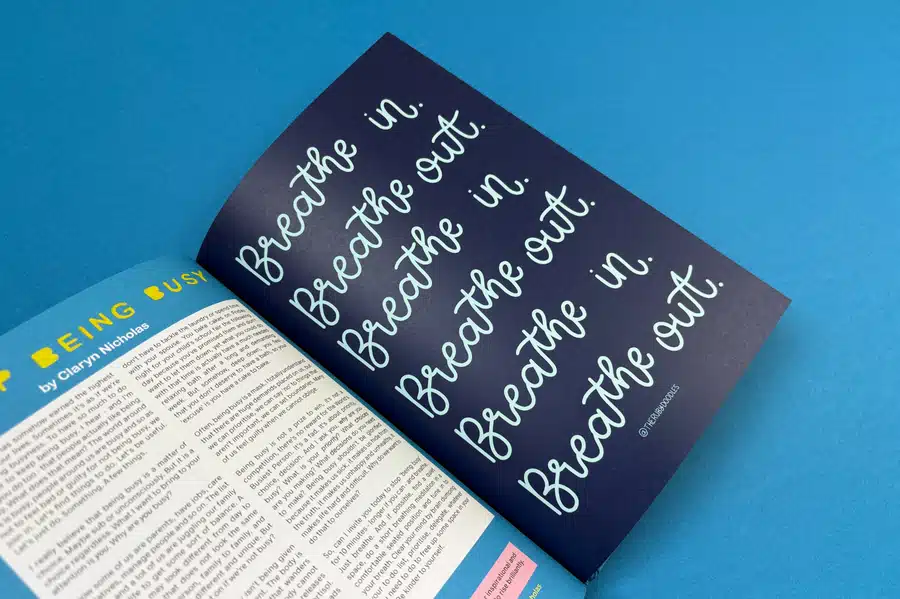
Setting a self-publishing budget helps manage resources and ensures efficient production. Unlike traditional publishing, you're responsible for editing, design, marketing, and distribution costs. A realistic budget is crucial to maximize profits and avoid overspending, allowing extra time to refine your work and enhance its quality.
Editing Costs
Professional editing boosts quality. For an 80,000-word manuscript:
Design Costs
A professional design attracts readers:
Marketing Costs
Effective marketing is key to success:
Investing wisely in these areas can enhance your book's quality and visibility, but adjust strategies based on results.
Do take a look at these pages for ideas on designers to approach on Fiverr. Or take a look at PeoplePerHour for 100's of book designers.
Of if you would prefer to work with an agency for a more tailored approach then take a look at our top book designers article this article will help.
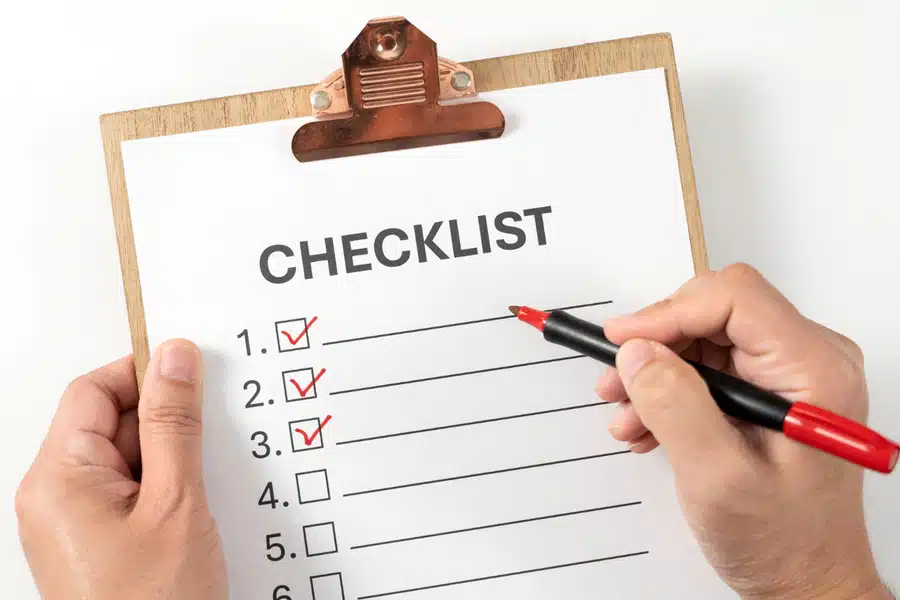
Now that you have a comprehensive roadmap, it's time to commit to some realistic deadlines to ensure smooth sailing toward your goal.
Creating a timeline or schedule can motivate and help you manage time effectively. Remember, every book engages a unique journey, and the timelines for each can differ significantly based on complexity.
However, here's a rough sample deadline schedule that should give you a pretty good idea:
| Task | Deadline (from the start) |
| Manuscript Editing & Proofreading | 1 month |
| Cover Design & Formatted Manuscript | 2nd month |
| Promotion Begins (Start Marketing) | 2 weeks after formatting |
| Release Date | 1 month after promotion |
While self-publishing a book can be exciting and fulfilling, it can also be time-consuming. Why not speed up the process and ensure your book stands out by seeking professional help? At ExWhyZed, we specialize in helping you publish a book that truly captures the essence of your story.
Whether you want a simple design or something more intricate and creative, our team uses expert techniques, including vibrant colors and stylish typography, to make your book look and feel professional. Let us handle your publishing needs so you can focus on what you do best—writing! Get in touch with us today to get started.
Walking the self-publishing road can be demanding, but it could transform into an empowering journey with the right tools and guidance. A comprehensive checklist, like the one provided in this blog, can serve as your compass, guiding you smoothly through this process and helping you find the right place in your publishing journey.
From conceptualizing your idea to finally putting your work out in the world, each stage brings moments of discovery, learning, creativity, and triumph. So, confidently embark on this incredible journey armed with all the essentials detailed in this guide.
Remember, every great author started somewhere, so take that first bold step towards shaping your literary dreams.
While self-publishing offers greater control over book profits, it involves upfront costs for professional book editing, cover and layout design, ISBN procurement, print copies (if opting for a print run), and marketing and promotional activities, especially for non-fiction. Costs can vary greatly based on the quality and extent of these services.
The duration to self-publish a book varies based on factors like the time to write the first draft, edit, format, design, and devise a marketing strategy for your book launch. At Ex Why Zed, we will aim to deliver your finished books in 1-2 weeks from when we receive print ready artwork. No messing about with 6-12 months like you will experience if going through a Publishing House.
Traditional publishing houses manage everything from editing, designing, and marketing to distributing your book while you surrender most of your royalties and creative control. Self-publishing empowers authors to retain all rights and produces higher royalties but involves more hands-on work and self-investment.
Yes, self-publishing allows flexibility to publish your book in multiple formats, such as ebooks, paperback, hardcovers, and audiobooks. At Ex Why Zed, we print softback and hardback to appeal to different price points. You can decide the format(s) based on your book's genre, budget, and target audience's preferences, including options offered through Amazon KDP. and Google Play Store.
Have you ever run your fingers across the embossed title of a beautiful hardcover book and felt that unmistakable thrill? That moment when a story transcends digital pixels to become something you can hold, cherish, and pass down through generations? At Ex Why Zed, we don't just print books—we transform creative visions into tangible treasures that readers can fall in love with page after page.
The publishing landscape has been democratised, placing unprecedented creative control in your hands. No more compromising your vision to fit a publisher's mold. Our eye-opening exploration of the pros and cons of self-publishing reveals how this path grants you not just creative sovereignty, but direct connection with your audience. We don't shy away from the challenges either—from marketing hurdles to distribution logistics—equipping you with clear strategies to overcome each one so your story reaches precisely who it needs to.
In a world of fleeting digital content, printed books offer something increasingly precious: permanence. Our deep dive into storytelling through print explores how the weight of paper, the texture of a cover, and even the sound of turning pages creates an immersive experience digital formats simply cannot replicate. Discover how thoughtful design choices and quality materials transform reading from a mere activity into a multi-sensory journey that readers won't just remember—they'll revisit again and again.
What once seemed like an intimidating technical maze becomes an empowering creative adventure with the right guide. Our meticulously crafted step-by-step guide to printing your book eliminates confusion and builds confidence at every stage. From preparing your manuscript for professional printing to selecting finishing touches that make your book unmistakably yours, you'll move through each phase with clarity and purpose—no publishing degree required.
Dive into our curated collection of real-world print projects—each analysed to reveal the techniques, materials, and decisions that made them exceptional. Whether you prefer watching videos or reading articles, this resource hub empowers your printing journey with practical insights from diverse specialist niches, helping you envision and achieve your own remarkable printed piece.
Dive into Self Published book options or grab some popcorn and watch the Self Published Book showcase video instead on our YouTube channel.
The dimensions, format, and physical characteristics of your book are not mere technical decisions—they're powerful storytelling tools. Our accessible breakdowns in book sizes made easy and book format: a beginner's guide translate industry jargon into clear choices that enhance your narrative. Whether you're creating a pocket-sized poetry collection or a coffee table art book, you'll understand exactly how your book's physical form can amplify its emotional impact.
Creating professional booklets requires a specific expertise in page arrangement that can make or break the reader's experience. Our visual tutorial on how to arrange pages for booklet printing transforms this technical challenge into an intuitive process. With clear examples and practical tips, you'll master the structural elements that ensure your booklet flows naturally, impressing readers with its professional polish.
The sleek spine of a perfectly bound book signals quality before a single word is read. Our streamlined guide to mastering perfect bound artwork in 5 minutes distills years of professional knowledge into actionable steps anyone can follow. Learn the precise file setup and design considerations that result in books that not only look professional on a shelf but maintain their integrity through years of reading and sharing.
Your carefully crafted PDF contains a world waiting to be experienced in three dimensions. Our practical article on how to print a PDF as a book ensures nothing is lost in translation during this critical transformation. Follow our guidance to preserve every nuance of your digital creation as it becomes a physical reality that readers can experience with all their senses.
Behind every successful self-published author stands an arsenal of carefully selected tools that amplify their creative capabilities. Our curated collection of top self-publishing tools for success introduces you to platforms and resources that handle everything from professional editing to global distribution. These tools don't just streamline your workflow—they elevate your entire publishing journey, allowing your creative genius to shine without technical frustrations.
Understanding the financial landscape of book printing empowers you to make choices that honor both your vision and your budget. Our transparent analyses of how much it costs to print a book and how much a custom hardcover book costs provide the clarity needed for confident decision-making. We break down every expense category, reveal potential savings opportunities, and help you invest wisely in elements that truly enhance your book's value to readers.
The journey from manuscript to masterpiece is one of the most rewarding creative adventures you'll ever undertake. At Ex Why Zed, we walk beside you not just as service providers, but as fellow book lovers who understand the profound significance of what you're creating.
Every page we print carries not just ink, but ideas, emotions, and experiences that will touch lives in ways neither of us can fully imagine. That's why we approach each project with reverence for your vision and commitment to exceptional craftsmanship.
Your book isn't just another product rolling off our presses—it's the culmination of your creative journey, and the beginning of countless reading journeys to come. Let's create something extraordinary together that will find its way into hands, hearts, and bookshelves for generations.
Ready to transform your manuscript into a masterpiece? Explore our resources, reach out with questions, or take that exhilarating first step toward holding your book in your hands. Your readers are waiting.
Printing a PDF as a book involves more than just pressing print. Choosing the right software, adjusting the layout, and setting up your printer correctly are all crucial for a professional finish.
This guide covers everything—from why printing your PDF as a book is beneficial to preparing your document, selecting margins, print quality, and binding options, including the number of pages you have. Follow these steps, and you'll have a well-formatted, professionally printed book in no time! Ex Why Zed provides premium book printing services in the UK, offering the highest quality paper and binding options, along with a print preview before finalizing your order.

Turning a digital PDF into a beautifully printed book in PDF format is an excellent way to bring your content to life. Whether you’re a self-published author, a business creating manuals, or a photographer assembling a portfolio, a well-printed book adds a professional touch. However, achieving high-quality results requires careful formatting, choosing the right materials, and selecting a trusted printing partner.
In this guide, we’ll walk you through the entire process, from formatting your PDF to selecting the best printing service—with a special focus on Ex Why Zed, a premier book printing service in the UK that ensures top-tier results.
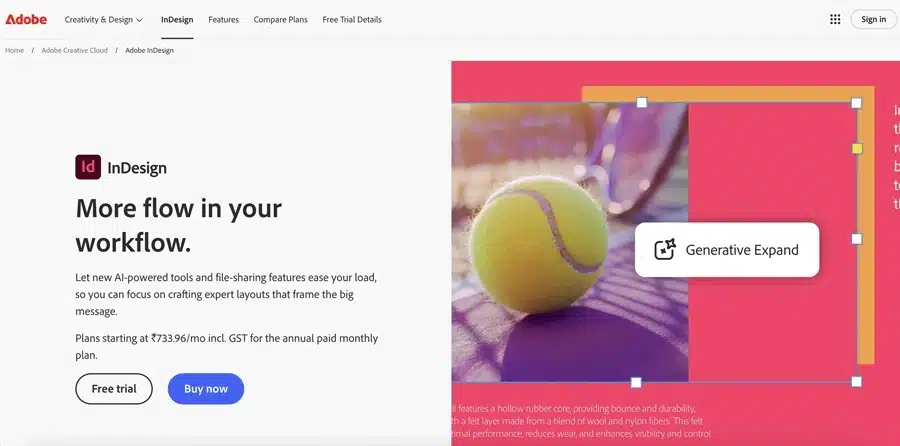
Proper formatting is key to ensuring your book prints exactly as you envision. Here’s what you need to consider:
Your book’s dimensions should be set before designing the content for pdf printing. Common sizes include:
A5 (148mm × 210mm) – A popular choice for novels and journals, especially when formatted in a PDF file.
A4 (210mm × 297mm) – Ideal for workbooks, manuals, and portfolios.
Custom Sizes – If you have a unique vision, custom dimensions can be accommodated by professional printers like Ex Why Zed.
If your book includes images or background colours that extend to the edge of the page, you need to set a 3-5mm bleed to prevent unwanted white borders during trimming.
To avoid content being cut off, leave sufficient inner margins (especially for bound books) and ensure enough spacing for readability. If your book will be perfect bound, the inner margin should be at least 15mm to account for the binding process.
Fonts should be embedded to maintain consistency across different devices and printers. Additionally, images should be at least 300 DPI to prevent pixelation in print.
Odd-numbered pages should appear on the right, even-numbered pages on the left.
If your book has a blank page, ensure it’s placed correctly to maintain proper flow.
Your book’s purpose and page count will determine the best binding option:
Perfect Binding – A sleek, professional option suitable for novels, reports, high-end magazines and student final major project printing. .
Saddle Stitching – Common for booklets, zines, and short-form publications.
Wire-O Binding (Spiral) – Perfect for workbooks, manuals, and notebooks that need to lie flat.
Hardcover Binding – The most durable and premium choice, ideal for special editions and coffee table books.
Pro Tip: Ex Why Zed offers a variety of binding styles to match your project’s needs, ensuring durability and a high-quality finish.
Choosing a reliable and experienced book printing company is crucial. Here’s why Ex Why Zed stands out in the UK printing industry:
Expert Craftsmanship – Whether you need a small batch or bulk printing, Ex Why Zed ensures precision and quality at every step.
Customisation Options – From paper types to cover finishes, ExWhyZed provides tailored solutions.
Eco-Friendly Printing – If sustainability matters to you, Ex Why Zed offers environmentally conscious printing options.
Fast Turnaround – Quick production times without compromising quality, so you get your books when you need them.
Enjoy our 250 reviews on reviews.io and a further 495 on Trustpilot
Once your document is formatted correctly, it’s time to prepare it for submission and printer settings.
To ensure your file meets printing standards, save it in PDF/X format (such as PDF/X-1a or PDF/X-4), which locks in fonts, colours, and layout.
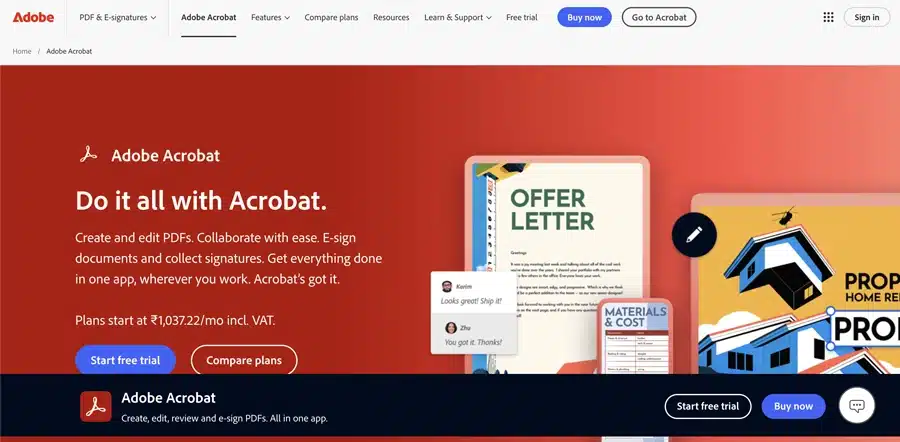
Before printing a large order, always ask for a proof copy (digital or physical). A test print allows you to spot errors and make necessary adjustments. We can either bind this or send it out as flat sheets.
Paper Type: Matte, gloss, or uncoated? Choose based on your book’s purpose.
Cover Finish: Softcover, hardcover, lamination (glossy or matte).
Color vs. Black & White: Full-colour pages cost more but enhance visuals.
Need help deciding? ExWhyZed’s expert team can advise you on the best materials and finishes for your book.
Before placing your final order: Proofread thoroughly for typos, misaligned elements, or missing pages. Confirm Binding & Material Choices to match your vision. Check the Delivery Timeline so you receive your books on time. You can pay using a credit card or other payment methods.
Once everything is in place, place your order and track your shipment.
Ex Why Zed offers nationwide UK delivery with excellent customer support to keep you informed every step of the way.
🇺🇸 We now have two print hubs in the States - one on the East Coast, one on the West. So we can now deliver overland in 5/6 working days saving you both time and cost compared with shipping from the UK. Win win! You can choose which shipping method depending on how fast you need the books, but we tend to use UPS.
So our print price will be the same as we have already quoted but shipping will be much faster and cheaper (and no import Tariffs either, in case Trump launches them before you go ahead).
At Ex Why Zed, we bring your vision to life with beautifully printed books crafted to perfection. Whether you're dreaming of a striking hardback, a sleek softcover, or a bold coffee table book, we provide bespoke printing solutions tailored just for you.
With eco-friendly options, premium finishes, and meticulous attention to detail, your book will truly stand out. Let’s create something amazing together! Feel free to email us at hello@exwhyzed.com or call us on 01206 766647
Printing multiple PDFs as a book at home or in the office is easier than you think. Understanding the printing process, including page sizing, ensures a polished result within the printable area, whether it's a manual, booklet, or blog novel. You can use software like Adobe Reader in the process, including steps like folding.
From preparing your PDF with Adobe Acrobat or Microsoft Publisher to selecting paper size, print quality, and binding options like saddle stitch or perfect binding, each step matters.
We hope this guide helps you create high-quality booklets with confidence. Happy printing!
Yes, you can! If your home printer supports automatic duplex printing (double-sided printing) or manual duplex printing, including duplex printers, you can produce a simple booklet by printing on both sides of the paper, including the front side and back side. However, you may be limited by factors such as the maximum paper size your printer can handle and the print output quality.
Yes, some printers have built-in booklet printing options. However, software like Adobe Acrobat or Microsoft Publisher gives more control over layout and formatting.

Ensure your page count is a multiple of four. If not, intentionally add blank pages to prevent awkward formatting. Your pdf file should be supplied with all the pages in reading order. If you need blanks in there to ensure the double-page spreads match up, please do include them in the PDF too.
For a professional look, use 100-120gsm paper for inside pages and 250-300 GSM for covers. Matte paper reduces glare, while glossy paper enhances colors.
If you're dreaming of turning your manuscript into a physical book, you're probably asking one key question: How much will it cost to print a book? Whether you're an aspiring author, a small business owner looking to create promotional materials, or someone with a passion project, understanding the costs can be overwhelming.
The price isn't just about pressing the "Print" button; it combines paper quality, print run size, binding type, and many other factors. In this blog, we'll break down the costs in a way that helps you make informed decisions, avoid surprises, and find the most cost-effective printing options for your unique project.
Let's dive into the world of book printing—no jargon, just practical advice you can use to bring your book to life.
To begin with, let's look at the estimated cost of printing a softcover book. If you're looking to print a softcover (paperback) book, whether it's a novel, a guide, or any other type of publication, the printing cost in the United States can range from $2.00 to $4.00 per copy, if printed in bulk quantity.
This price can vary based on factors such as the book's size, the type of paper you choose, the color of the cover, and the binding style. Remember that this doesn't include other essential costs like cover design, ISBN registration, or pricing for shipping fees. When planning your budget, it's important to account for these additional expenses to ensure your project stays on track.
ExWhyZed, a creative print company, offers high-quality softcover book printing, also known as perfect bound books, designed for durability and a professional finish. Our services include customizable paper stocks, cover finishes, and printing options, ensuring each book aligns with the author's vision. They create books with clean, square spines using industry-standard perfect binding for a polished look.
An A5 Saddled Stitched Softback for 500 copies at Ex Why Zed can cost you $399, which means a single copy could cost you approximately only $0.80. You can request a quote from us for your requirement now!
Hardcover books are more expensive to print than paperbacks, but the investment can be worth it if you want a premium feel and longer-lasting quality.
Expect to pay anywhere from $5 to $10 per copy for hardcover printing. The price depends on factors like the thickness of the cover material, the type of print (full color vs. black-and-white), and the overall print quality.
If you're printing a book for a special edition or to appeal to collectors, the extra cost could be a great selling point for your readers.
Spiral-bound books, such as cookbooks, workbooks, or instructional guides, are perfect for projects that need to lay flat. Printing a spiral-bound book typically costs between $4 and $6 per copy, but the final price will depend on a few variables.
The cost is impacted by the type of coil (plastic or metal), the method of printing (digital or offset), and the quality of paper used. If your book needs to be easily referenced or opened to a specific page, spiral binding is a great option.
However, note that it may come with a slightly higher price tag than traditional binding methods.
At Ex Why Zed, our opinion is that Spiral Bound books are best for company reports and not creative publications.

Several elements come into play when examining the cost of printing a book. These factors might seem overwhelming initially, but considering them can facilitate a smoother and more financially viable publishing process. Let's examine them in depth.
When you decide how many copies to print, you determine how much you'll pay per book. Larger print runs help lower the cost per unit because the initial setup costs are spread across more books.
So, if you're printing 100 copies, the cost per book will be higher than if you were printing 1,000 copies. However, don't jump into a massive print run if you're unsure about demand. Test your market first to avoid overcommitting.
The paper you choose plays a significant role in the final look and cost of your book. Higher-quality paper (think thicker or textured) will give your book a premium feel and increase the cost.
Lighter, standard paper is budget-friendly but might not provide that luxurious feel you may want for a high-end project. Consider your book's purpose and your target reader when making this choice. For example, a simple novel doesn't need luxury paper, but a photo book might.
ExWhyZed offers a variety of house papers, including Uncoated, Silk, Gloss, and Evolution Uncoated, each available in weights from 100gsm to 350gsm. For zine interiors, they recommend a maximum of 170gsm to maintain flexibility, while covers are best suited to 300gsm, as 350gsm may be overly rigid.
To select the best paper quality for your book, check out this guide.
Larger books or those with more pages automatically increase the cost due to more materials required, including the size of the book. Expect your costs to rise if your book has a higher page count or unique dimensions.
While it may seem tempting to choose a bigger size or longer format, it's important to stick with what makes sense for your content. Plus, custom sizes or non-standard formats might incur additional setup fees.
Whether your book is in color or black and white impacts the final cost. Color printing is more expensive because it uses additional ink and a more complex process. Color is essential if your book includes illustrations, images, graphics, or photos—but prepare to pay for it.
However, for text-heavy books or novels, black-and-white printing will help keep things affordable without sacrificing quality.
Binding affects both the durability and price of your book. Perfect binding (for paperback books) is cost-effective and widely used. If you're aiming for a more professional, high-end look, hardcover binding is an option, though it adds more to your budget.
Saddle stitching works well for shorter books, but it's limited to fewer pages. Whether creating a long novel or a small booklet, your binding choice should reflect your book's content and budget.
The cover is your book's first impression, and it can be a significant factor in the cost. If you're looking for something eye-catching, consider finishes like embossing or foil stamping, which add a premium touch but will drive up costs.
However, a simple cover design with a matte or glossy finish keeps things sleek and more affordable. Consider your book's market and decide how much you will invest in making that first impression count.
Your choice of printing method also affects both cost and quality. Creative digital printing is most efficient on smaller runs. There's no setup fee, which makes it more affordable for limited quantities, but the cost per book is higher.
On the other hand, offset printing is designed for larger batches and requires a more expensive setup process, but once you're printing in bulk, the price per unit drops significantly. Think about your needs, such as short runs vs. long runs, and choose accordingly.
Once your book is printed, it's time to get it into the hands of your readers. Shipping and distribution are often overlooked but can add significant charges. Shipping costs are affected by the weight of the book, the quantity you're sending, and the destinations.
If you're distributing through retailers or directly to customers, don't forget to account for inventory storage, order processing, and delivery fees. Planning ahead for these hidden costs will help ensure you don't exceed budget.
Let Ex Why Zed handle your book fulfilment, storage, and distribution! Click to read more.
Having a granular perspective on the components of book publishing costs aids in strategizing your print order effectively. Suppose we consider a standard 6" x 9" paperback with 200 pages, a full-color cover, protected with gloss film lamination, and a black-and-white interior. Here's an in-depth breakdown of the possible costs, further clarified in different stages:
The manuscript must be prepared before entering the actual printing process. This phase includes proofreading, editing, formatting and even cover design—all of which contribute to the total cost of self-publishing a book. Errors in text can be quite costly if caught after the print run has been executed. These expenses may range from $500 to $3,000, depending on the editor's experience and the manuscript's complexity.
Printing costs can be expensive, influenced by features such as print run size, the chosen printing method, book dimensions, and selected paper. A conservative estimate would cost around $2.50 to $4.00 per book for 1,000 copies, making the total printing cost between $2,500 and $4,000.
Printing Method | Print Run Size | Per Book Cost | Total Cost |
|---|---|---|---|
Offset Printing | 1000 copies | $3.00 | $3000.00 |
Digital Printing | 1000 copies | $4.00 | $4000.00 |
Besides, if you're considering ExWhyZed for your printing needs, a 500-copy order with a 300gsm Silk cover and 130gsm Silk (Satin) inside pages would cost approximately $0.80 per book, bringing the total to $399.
Adding finishing touches to your book's cover can enhance its appeal but also increase the cost. Lamination, embossing, foil stamping, or spot UV coating can cost $1 to $5 per book.
Although marketing and promotion aren't directly related to printing, they are essential to a book's success. The costs of marketing campaigns, social media, online ads, and book launch events can range from a few hundred to thousands of dollars.
When you choose ExWhyZed, you get plenty of benefits with your marketing and promotion spends. Our Social Media Promotion Pack is a comprehensive toolkit designed to enhance your book's visibility across various platforms.
This package includes a professionally written press release and blog post, a one-week social media calendar, a month-long social media ideas planner, tailored post suggestions for platforms like Facebook, Instagram, TikTok, and LinkedIn, 10-20 high-quality photographs of your book, and one-minute videos optimized for both landscape and portrait orientations. This pack is priced at £250, which is approximately equal to $322.49 USD.
An International Standard Book Number (ISBN) and a barcode are necessary for retail distribution. A single ISBN costs roughly $125 or $295 for a block of ten, while barcodes may be purchased for $25 to $50 each.
Other potential costs encompass legal fees for copyright services, possible software subscriptions, or seeking professional advice – which could be as much as $50 to $300 per hour.
Considering all these factors, let's look into the total estimated book printing prices. Below is a table for your reference:
Expense Category | Estimated Cost Range |
|---|---|
Editing & Manuscript Preparation | $500 – $3,000 |
Printing Costs (Offset: $3.00 per book, Digital: $4.00 per book – 1,000 copies) | $3,000 – $4,000 |
Cover Finishing (Per Book: $1 - $5) | $1,000 – $5,000 |
Marketing & Promotion | $500 – $5,000+ |
ISBN (Single vs. Block of 10) | $125 – $295 |
Barcode | $25 – $50 |
Miscellaneous (Legal, Software, Professional Advice, etc.) | $50 – $300 per hour |
Estimated Total Cost (Offset Printing) | $5,200 – $11,670+ |
Estimated Total Cost (Digital Printing) | $6,200 – $12,670+ |
Now that we have a detailed understanding of how much you need to pay to print your book, it's also ideal to know how to cut down expenses wherever possible. While many costs are inevitable, there are strategies to curb the expenses associated with book publishing. Let's examine these tips.
Print on Demand (POD) services can be cost-effective, particularly for smaller print runs or first-time authors. By enabling book printing as ordered, POD eliminates the requirement of a significant upfront investment while reducing storage concerns. Companies like Amazon's KDP offer POD services that can help publish your eBook.
If high demand is predicted for your book, printing in bulk can considerably lower the per-unit cost. Offset printing becomes economical with larger quantities; hence, this could be a viable strategy if confident about sales projections. Simultaneously, obtaining multiple quotes from printers and negotiating with suppliers could result in discounts or better rates.
Do you want to simplify the process of printing your book and ensure a seamless experience from start to finish? At ExWhyZed, we specialize in making book printing hassle-free, offering tailored solutions to meet your unique needs. Whether you're printing a paperback, hardcover, or spiral-bound book, we provide top-notch quality and service at competitive prices, ensuring your book is produced to the highest standard.
Choosing us means partnering with a reliable brand that understands the complexities of the printing world. We are committed to helping you bring your vision to life while keeping your budget in check. Ready to take the next step in printing your book? Contact us today to get started, and let ExWhyZed handle the details!
Printing a book is a complex process, with various factors contributing to the overall costs. By thoroughly understanding these factors and exploring cost-saving strategies, you can make smarter, more informed decisions that help keep your project within budget.
Strategic planning and thoughtful consideration of each aspect of the printing process will ensure your book's success and help you achieve your publishing goals without overspending. With the right approach, you can easily print your book while staying financially on track.
A print run size indicates the number of copies intended for printing. Due to economies of scale, the cost per unit drops with a more extensive print run. This allows the printer to spread the setup costs over more units, lowering the overall cost per book.
The cost of printing a 200-page book varies based on factors like paper quality, binding, and quantity. On average, the cost of printing one copy can range from $2 to $10. The cost per unit decreases for larger quantities. Additional features like color printing or special finishes can increase the price.
Printing a 300-page book can cost anywhere from $3 to $10 per unit, depending on factors like quantity, paper quality, color options, and binding. Additional costs may apply for cover design, editing, and formatting.
Printing a paperback can cost between $2 and $4 per copy, depending on factors such as the book dimensions, quality of paper, printing method, and the size of the print run.
The average price to print a single book can greatly vary depending on factors mentioned in this blog. For a standard 200-page black-and-white paperback, the cost generally lies between $2 and $4 per copy. Conversely, the same full-color book could cost between $10 and $30 per copy. Hardcover volumes typically fetch higher costs due to additional materials and a different binding process.
In the publishing world, hardcover books are often considered the gold standard. They symbolize quality, durability, and prestige, making them a top choice for both self-published authors and traditional publishers.
But with that premium look and feel for the genre of your book comes a significant cost. If you're considering printing a hardcover, you're probably asking yourself: Is it worth it? And what exactly drives up the price?
In this blog, we'll walk you through the essentials of hardcover book printing. From understanding what makes a hardcover book different to uncovering the factors that affect production costs, we'll give you the helpful insights you need to make informed decisions as you progress with your publishing project. Without waiting any longer, let's delve in!
Hardcover books, also known as hardback books, stand out due to their strong construction and elegant hardcover book design. The pages are bound into a text block and glued to thick paperboard covers, which are often reinforced with cloth or protective fabric.
Some hardcovers even have additional stitching for extra strength, ensuring they can be opened flat without damaging the spine.
While they may be heavier, their durability and premium appearance make them a top choice for book lovers, offering longevity and a superior reading experience.
Hardcover books are becoming a favorite for readers, not just for their durability but for the sense of quality, elegant appearance, and authority they convey. With strong binding and luxurious finishes, these covers make a statement on any shelf.
Most importantly, for self-published authors, it offers a chance to stand out and increase sales, providing a tangible connection with readers and boosting visibility.
Overall, in a crowded market, hardcovers aren't just books—they invest in lasting appeal and higher profit margins, ensuring a healthy profit in every venture.
When it comes to hardcover books, several facets set them apart, making them preferred choices. This includes:
Sturdiness and Longevity: The tough covers and intense binding process guarantee they're built to last.
Easy Handling: The robust nature allows easy handling without the fear of damaging the book.
Enhanced Visual Appeal: High-quality cover materials offer more opportunities to incorporate beautiful and engaging design elements.
Prestige & Authority: Hardcover books signal prestige and authority, often making them the first choice for collectors and literature enthusiasts.
Higher Resale Value: Due to their quality and durability, hardcover books tend to have a better resale value than their softcover counterparts.
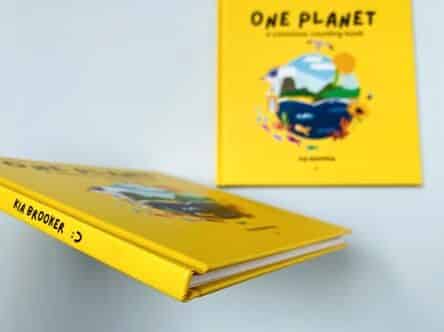
Every decision—from book size to paper type—impacts your cost aspect when publishing a hardcover book. For example, larger books require more materials, which increases production costs and leads to higher expenses, especially when considering common trim sizes. Let's look into the various factors that can influence the pricing.
Opting for a larger trim size means more materials, labor, and increased costs. While a big book may look impressive for specific genres, it can quickly eat into your budget.
However, you can’t just opt for a small book to save cost as it may not attract your targeted audience. Thus, choosing the right size, i.e, 6 x 9 inches, 8.5 x 11 inches, and 7 x 10 inches, among others, can be crucial.
More pages equals higher costs, and the type of paper you choose adds to the expense. This also includes the number of pages you choose in your selection and the quality of the interior pages. A fairly heavy gloss-coated paper for an art book will do the images justice and be pricier, while a novel can be printed on lighter, uncoated paper to save money.
Book Paper Types
Type of Book |
Paper Type |
|
Novel |
Uncoated, lighter weight |
|
Art/Coffee table |
Gloss coated art paper |
Ex Why Zed offers a range of paper types tailored for hardcover book printing, ensuring durability and a premium feel. Options typically include gloss-coated paper for vibrant, high-impact imagery, matte-coated paper for a sophisticated, glare-free finish, and uncoated paper for a more natural, tactile reading experience. We also offer recycled paper for an eco-friendly alternative. To find the best paper type for your hardcover project, explore Ex Why Zed’s paper options and customize your book to match your vision.
Your book's cover sets the tone. Basic materials like cardboard or grayboard are cost-effective, but the choice of cover material, such as luxe options like cloth or leatherette for the cover of your hardcover book, will increase the price and may come at a higher price point.
So what should you do in such a situation? Well, choose a material that enhances the desired aesthetic appeal but fits within your budget.
The next factor that can influence the pricing is the quantity. Printing more copies lowers the per-unit cost, but large quantities can strain your cash flow if demand is uncertain.
For example, if you want to print 500 copies, expect the budget to be approximately around $3.99 per copy, whereas for 10,000 copies, expect to pay approx $1.65 per copy.
Adding just the basics in the book cover isn’t going to attract your readers. Silk ribbons, custom endpapers, and dust jackets can add a premium touch to the book but also incur extra expenses.
Prioritize features that genuinely enhance the reader's experience without cutting too deeply into your profit margins.
Using color in the covers of hardcover books increases production costs due to the higher cost of color ink and more complex printing processes. Full-color printing often requires advanced equipment and longer production time.
|
Printing Type |
Estimated Cost (per copy) |
|
Black & White |
$5 |
|
Spot Color (1-2 colors) |
$7 |
|
Full Color (4 colors) |
$10 |
|
Premium Full Color (high-quality) |
$15 |
Lastly, full-color printing, embossing, or metallic foil stamping can make your book stand out but come at a higher cost.
Evaluate whether these effects align with your creative vision and budget—sometimes, simpler options can achieve the same impact.
So far, we've explored the various factors contributing to your hardcover book's cost. Now, let's dive into the common pricing options available. Depending on your specific needs and budget, different service providers deliver the best solution and the highest quality product while offering varying pricing structures, and choosing the right one is key to maximizing both cost-efficiency and quality.
If you need a unique, high-quality book, count on custom printing services such as from Ex Why Zed. Ex Why Zed specializes in high-quality custom printing services. We deliver expertly crafted hardcover printing for projects that demand durability and a premium finish. From art books and photo albums to coffee table books and portfolios, we offer high-quality materials, custom binding options, custom cover designs, and professional-grade printing. Benefits include:
- Personalized pricing and options
- Premium materials and long-lasting finishes
- Superior quality offset printing
Print-on-demand services like Amazon's KDP, Lulu, and BookBaby let you print as few as one book at a time. This is perfect for independent authors testing the market. With no upfront costs and competitive pricing, it's budget-friendly, but customization options and quality may be limited. Expect:
- Print as few as one book
- No upfront costs
- Basic material and format options
Offset printing is best for bulk orders (500+ copies) and offers better per-unit prices as quantity increases. It's perfect for authors with an established audience or high demand. Offset books also offer higher quality than POD. Benefits include:
- Lower cost per unit with higher quantities
- Premium quality
- Best for established authors with solid demand
Now that you have the details, choosing the right printing solution, including custom offset printing services, can feel overwhelming. Print-on-demand is affordable to start but limits customization and becomes costly with growth.
Meanwhile, offset printing offers cost efficiency for larger quantities but requires a significant upfront commitment. Lastly, custom printing provides flexibility and quality but at a higher cost.
The key is balancing your needs—cost, customization, and quantity—to make the best choice that aligns with your creative vision for your project.
Choosing the right option can feel overwhelming. But weighing both the pros and cons can help a lot. Let's delve in!
|
Printing Method |
Pros |
Cons |
|
POD services |
Minimal upfront costs, Flexible quantities |
Limited customization options |
|
Offset Printing |
Economical for high volumes, High Quality |
Higher upfront costs |
|
Custom Printing |
Highest quality, Fully customizable |
Cost varies greatly |
It all comes down to understanding your needs and budget. Ask yourself: Are you aiming to make a bold statement with a premium product, or are you testing the market cautiously? Consider your target audience—how big it is, their preferences, and how likely they are to buy. Align this with your creative vision.
Then, calculate the cost-to-profit ratio for each printing method based on projected sales. Remember, while additional features may raise costs, they could attract more buyers, boost demand, and ultimately increase profits.
At Ex Why Zed, your hardcover book must grab attention while staying within your budget. Whether you're just starting or already established, we offer affordable, high-quality printing solutions that bring your vision to life. From durable materials to customizable options, we ensure your book stands out without breaking the bank.
We also offer flexible printing methods to fit your needs, whether you're testing the market or preparing for a more significant launch. With Ex Why Zed, you can get a professional hardcover that resonates with your audience without unnecessary costs or complications, ensuring a high-quality final product. Ready to print your next hardcover? Contact us now!
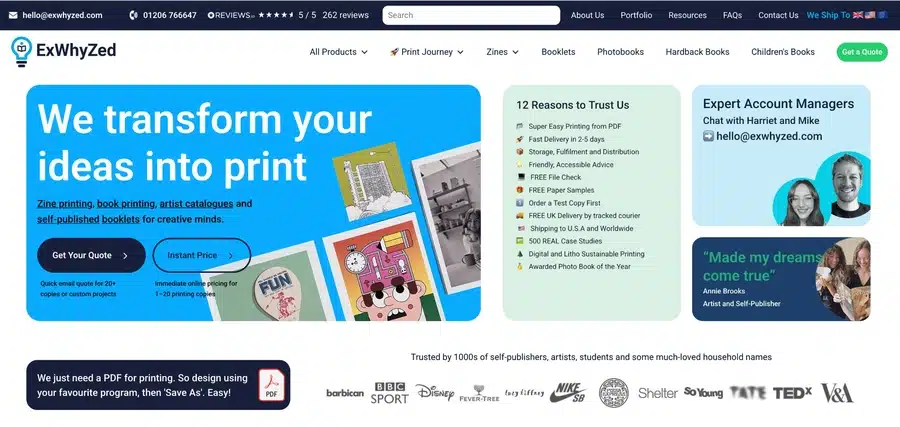
Making your hardcover book a reality with premium hardcover printing doesn't have to be overwhelming. As a creator, you want your first novel to reflect your vision while staying within budget, including the presentation of your author name on the cover. By understanding your options—print-on-demand, offset, or custom printing—you can find the right balance of quality and cost that works for you, such as a beautiful printed paper dust jacket that enhances your book's appearance.
A well-produced hardcover addition boosts your author brand and gives dedicated fans, including an eager fan base, an experience they'll remember, leading to more demand and higher profits. With some careful thought and planning, you can bring your book to life in a way that feels true to you and excites your audience, enhancing your overall author brand.
The cost to print a 300-page printed hardcover book varies depending on the size, cover materials, printing options, and the quantity printed, with an average US price impacting overall costs. For an order of 1,000 copies, the starting cost of your hardcover books could be about $2.72 per book.
Print-on-demand allows for printing one copy at a time, which is ideal for authors testing the market or having limited budgets. On the other hand, offset printing offers high-quality prints and is economical when opting for larger quantities, making it the preferred method for established authors.
Yes, most printing services, including offset and custom printing, offer volume discounts and flexible distribution channels. The price per unit decreases as the quantity increases. This pricing structure can be beneficial for those planning to print a large quantity of hardcover books.
Yes, it may be advantageous to combine different printing options depending on your needs. For example, you could use a Print-on-Demand service for initial test copies and switch to offset printing for larger batches once demand has been established.
To ensure high-quality results, start by selecting quality materials like gloss art paper, which enhances color vibrancy. Use an instant price calculator to compare the cost of printing across different printing companies and request a free estimate to stay within budget. Careful planning is essential to avoid unexpected costs, and opting for custom designs allows for unique, professional results. Finally, going the extra mile by reviewing detailed information about printing options ensures the best outcome for your project.
Writing a book is a dream for many, but traditional publishing is highly competitive. Self-publishing offers a powerful alternative, with bestsellers like The Martian proving its potential. Between 2018 and 2023, self-published books grew 264%, reaching $1.25 billion in annual sales. This guide simplifies the publishing process, helping you turn your manuscript into a printed book.
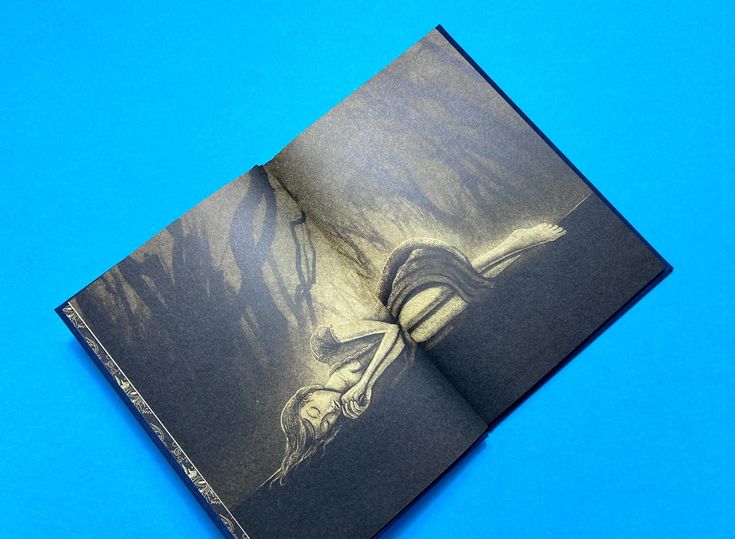
From writing your manuscript to distributing your book, the printing process can be complex. We've simplified it into eight easy steps to help you get your book printed efficiently. Follow this guide, and you'll have your book ready in no time. For a hassle-free experience, consult ExWhyZed for professional printing services in the UK.
Before you even think about printing, ensure your manuscript is polished and formatted correctly.
Editing and Proofreading – Revise your manuscript multiple times and, if possible, hire an editor or use editing tools like Grammarly or ProWritingAid.
Formatting – Use software like Microsoft Word, Adobe InDesign, or Scrivener to format your text with proper margins, line spacing, and fonts. Standard book fonts include Garamond, Times New Roman, or Georgia for readability.
Page Numbers and Layout – Ensure correct placement of headers, footers, and page numbers. Fiction books often start each chapter on an odd-numbered page.
Convert to PDF – Since PDFs preserve formatting across devices, save your final manuscript as a high-resolution PDF, preferably in CMYK color mode for printing
There are multiple ways to print a book, and each has its advantages and disadvantages.
Print-on-Demand (POD) – Services like Amazon KDP print copies only when a customer orders one, including options for an ebook. This is great for self-publishing since it requires no upfront investment. However, the per-unit printing cost is higher than bulk printing, especially when compared to large booksellers.
Offset Printing – This method is best for larger print runs (500+ copies). It provides lower costs per book, superior print quality, and more customization options, but it requires a significant upfront investment. Companies like BookBaby and 48 Hour Books offer offset printing.
ExWhyZed - If you're looking for professional-grade printing with full control over materials, finishes, and design, ExWhyZed is an excellent option. We offer premium printing services with a variety of paper choices, binding styles, and finishing touches to ensure your book stands out. Unlike print-on-demand services, we provide the flexibility of both small and large print runs, which is a great choice for authors who want high-quality results with a personal touch.
Choosing the right type of book size and materials affects the book's aesthetics and cost.
Common Book Sizes – Standard sizes include:
5”x8” or 6”x9” – Ideal for novels and general nonfiction books.
8.5”x11” – Used for textbooks, workbooks, or manuals.
Square or custom sizes – Often used for photography, children’s books, or coffee table books.
Paper Quality –
White or cream-colored paper for novels and nonfiction.
Glossy or matte-coated paper for photo-heavy books.
Standard 50-70 lb. paper for typical paperbacks; thicker paper for high-quality prints.
Binding Options –
Perfect-bound (glued spine) for paperbacks.
Case-wrap hardback or dust jacket for premium books.
Spiral or wire-bound for workbooks and notebooks.
ExWhyZed provides premium printing paper to ensure your book is finished to the highest standard and ready to reach your eager readers. We offer House Uncoated, Silk, Gloss, and Evolution Uncoated papers, ranging from 100gsm, a lightweight option, to 350gsm, a thick and sturdy card.
For zine interiors, we can go up to 170gsm, while covers can reach a maximum of 350gsm. However, since 350gsm can be quite rigid, we recommend 300gsm for a better balance, as 350gsm is often unnecessary. To know more about the paper type, check out our in-depth article.
A book’s cover is the first thing readers notice, so it should be professional and eye-catching. Using design software like Canva (user-friendly), Adobe InDesign (professional), or GIMP (a free alternative) can help you create a high-quality cover.
Ensure the cover size matches your book’s dimensions, including a 0.125” bleed to allow for trimming. The spine width should be calculated based on the total page count, with printers providing formulas for accuracy. Finally, export your cover as a high-resolution 300 DPI PDF with embedded fonts and CMYK color settings to ensure optimal print quality.
For a truly professional touch, ExWhyZed offers expert book design services. Our team creates stunning, print-ready covers that align with industry standards while reflecting your book’s unique personality. From precise formatting to high-quality finishes, ExWhyZed ensures your cover is visually striking and meets all printing requirements.
An ISBN (International Standard Book Number) is essential for books sold through retailers. In the U.S., you can purchase one from Bowker (myidentifiers.com), while in the UK, they are available through Nielsen. Some countries even offer ISBNs for free through national libraries. Print-on-demand services like Amazon KDP provide free ISBNs, but they will list their company as the publisher.
If you want full control over your book’s publishing details, it’s best to buy your own ISBN. Once you have it, convert your ISBN into a scannable barcode using free online generators to ensure easy retail processing.
In the UK, for the ISBN you should go directly to https://www.nielsenisbnstore.com/ who are the UK suppliers. On their site, you secure the ISBN, then download the barcode which can be added to your artwork.
Once your book is finalized, you’ll need to choose a printing service.
POD Platforms – Amazon KDP (largest reach), IngramSpark (best for bookstore distribution), Lulu (flexible options), Blurb (photo-heavy books).
Offset Printers – Companies like BookBaby, 48 Hour Books, and PrintNinja, as well as book manufacturers, offer high-quality bulk printing.
Local Print Shops – Check local printers if you want a hands-on approach and quick turnaround.
Upload Files – Submit your interior PDF and cover file. Most platforms provide templates to ensure your files meet specifications.
ExWhyZed offers premium printing services in the UK, using high-quality paper and a range of binding options. We provide Wire Stitching (Saddle Stitching), Perfect Binding, and Case Binding. To learn more about these options, check out this article.
Before committing to a large print run, always order a proof copy to ensure everything looks perfect. A proof allows you to check for printing errors, formatting issues, and color quality. Pay close attention to spelling, grammar, and overall formatting, as well as page alignment, margins, cover color accuracy, and spine text placement. If you spot any issues, make the necessary revisions, adjust your files, and re-upload them before finalizing your order.
This will be good for you to check the layout and overall feel of the book and then you can make all the necessary changes to the files before the final print run, just to advise however these will not be colour matched to the final print run. (What we mean is, we won't have a press minder matching the print pixel for pixel to the printed proof when we come to print the final books).
Once you’re satisfied with your proof, you can move forward with full printing and distribution. If you’re printing for personal use, simply order your desired number of copies—many printing services offer volume discounts. For self-publishing, you have several distribution options. You can sell directly through your website, social media, or local bookstores, allowing you to bypass traditional distributors. IngramSpark provides access to major bookstores and libraries, expanding your reach. Additionally, consider printing extra copies for events like book signings, conventions, or giveaways to further promote your book.
You can promote your book through ExWhyZed's social media promotion pack, which includes several tools to help you spread the word about your book to a larger audience on social media. If you're interested, you can always read more about it here.
The cost of printing a book depends on several factors, including page count, trim size, paper quality, binding type, color vs. black and white, and the quantity printed. Here’s a breakdown of common costs:
Black & White (Paperback, 200 pages): $3–$6 per book
Color (Paperback, 200 pages): $10–$25 per book
Hardcover: Add $5–$10 per book
Examples of POD Services: Amazon KDP, IngramSpark, Blurb
1,000+ copies (Black & White, Paperback): $1–$3 per book
1,000+ copies (Color, Paperback): $5–$15 per book
Hardcover: Add $2–$5 per book
Shipping & Storage: Bulk orders may require warehousing and additional logistics costs.
Trim Size: Larger books cost more.
Paper Type: Glossy, thick, or premium paper increases cost.
Binding: Perfect binding (paperback) is cheaper than hardcover or spiral binding.
The cost of each book differs by cover material, cover design, number of pages, and type of paper. To know the exact price, contact ExWhyZed on 01206 766647 and learn how much it would cost.
Looking for high-quality book printing in the UK? ExWhyZed is your go-to partner for exceptional print craftsmanship. Whether you're an independent author, a publishing house, or a business needing professional publications, we bring your vision to life with precision and style.
Why Choose ExWhyZed?
Premium Quality – Stunning finishes, vibrant colours, and durable bindings
Custom Options – Choose from hardcover, softcover, perfect binding, and more
Eco-Friendly Printing – Sustainable materials and ethical production
Fast Turnarounds – Reliable delivery to meet your deadlines
Personalized Service – Expert guidance from concept to completion
From novels and coffee table books to corporate brochures and art prints, we ensure every page makes an impact. Ready to print your masterpiece? Trust ExWhyZed – where creativity meets craftsmanship. Get a quote now!
Printing a book is a rewarding journey and a great way to share your stories. Every choice—from editing to format, including selecting a book trim size for custom book printing, paper, ink, binding, and designing a book cover—shapes the final product. This guide helps you navigate the process of printing your own book, turning your manuscript into a meaningful reading experience. Be patient, embrace the journey, and enjoy bringing your book to life!
Yes, indeed! Print-on-Demand services like the ones provided by Amazon KDP or Lulu allow you to print as few as a single print copy of your book. This is an excellent feature, especially for first-time authors or for personal use.
Printing time for paperback books can vary significantly based on factors like the size and complexity of your book, but you'll have complete control over the shipping timeline. Print-on-Demand services can typically produce a paperback book within 2-3 weeks, while large print runs could take 4-6 weeks or even longer.
Absolutely! Many printers take sustainability seriously and offer eco-friendly options like recycled or FSC certified paper. Print-on-Demand also supports sustainable practices as it eliminates the wastage associated with bulk printing and unsold copies.
The cost to print a softcover book or hard cover book varies based on factors like page count, print quality, and quantity. On-demand printing typically costs $10–$30 per book, while bulk offset printing can lower the price to $5–$15 per book. Custom features like embossing or dust jackets increase costs.
Are you struggling to add meaning to your premium photo books? Text can enhance special moments, creating lasting memories and capturing your most memorable moments. Whether it's a birthday, a trip, or daily life, each photo has a story. Personalise your photo book with heartfelt captions, and honour these moments when you decide on the book size. Follow our guide to create text-filled photo books that showcase memories and tales, adding a personal touch to your keepsakes.
Creating a custom photo book with text lets you capture the magic of special moments beyond the visual aspect. It breathes life into your photographs, depicting emotions, contexts, and nuances that a picture alone may not fully express. Whether it’s a quirky overlay on an Instagram-worthy shot, a nostalgic note reminiscing about a shared memory, or a simple date indicating a special day, text enriches your photos by adding an extra layer of storytelling.
Creating a hardcover photo book with text and a stunning gloss photo book cover made with the highest quality can be daunting at first, but we've got you covered! Follow our step-by-step guide to choose templates, paper, and fonts, customise layouts and colours, and use pre-designed options. Unlock the secrets to crafting a vibrant photo book with text.
The first crucial step in creating your personalised photo book is choosing the right template, including options like softcover and various photo book styles. Many online photo bookmakers offer templates for different occasions and sizes, such as lay-flat designs.
Consider content type (text-heavy or photo-focused), event theme (wedding, travel, birthday), preferred style, and photo quantity. Your template sets the tone, so choose wisely.

Choosing the right font size, style, colour, and paper type is essential for readability and aesthetics in your photo book. For text-heavy content, opt for softcover books with matte finishes, such as our matte paper options, to minimise glare and ensure easy reading. Glossy finishes work well for vibrant images, enhancing colour depth.
Consider font legibility based on paper type. Serif fonts like Times New Roman offer a classic feel, while sans-serif fonts like Arial or Verdana provide a modern touch. Avoid overly decorative or cursive fonts that may be difficult to read. Maintain strong colour contrast between text and background to ensure clarity without causing eye strain.
When customising your photo book with text, focus on positioning, formatting, colours, and sizes for a polished look. Strategically place text with captions, overlays, bottom notes, or entire pages, effectively balancing photos and text layers.
Use bold, underline, or italics formatting options to highlight key elements. Choose text colours and sizes that match your book's theme, avoiding fonts too small to read or too large that might overpower images. These tips will help you create a unique, visually appealing photo book with text.
Now that your layout is set, crafting your story should be taken care of. Adding captions or stories provides context to your images, preserving emotions and details for years. Keep your text concise. Let the photos take centre stage while your words complement them.
Evoke feelings with sentimental notes, funny anecdotes, or unique insights. Include details like dates, names, and locations while maintaining a consistent tone.
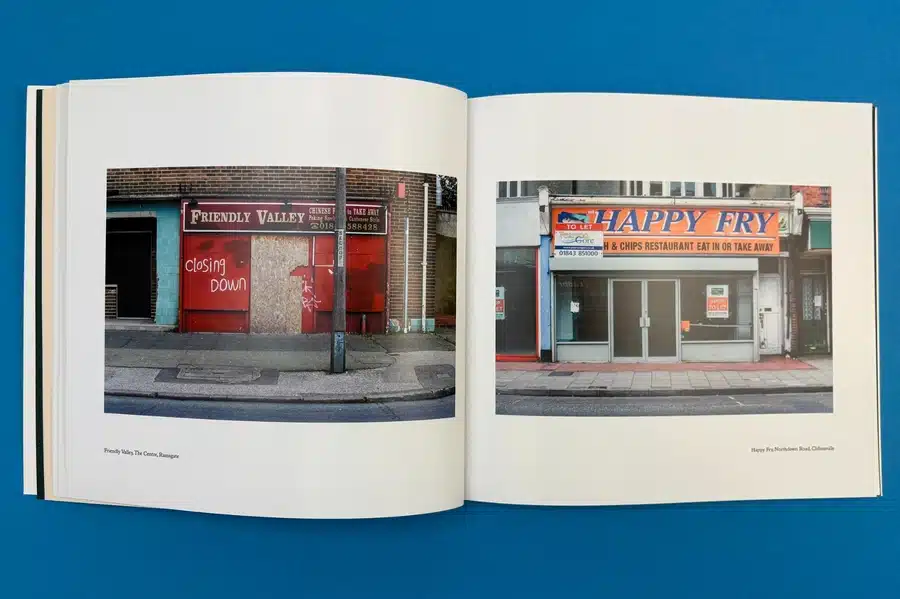
Ready to create your perfect photo book? Use Ex Why Zed's Printed Project Builder to easily customise layouts, select paper, and get a quote for your project. Our platform ensures high-quality printing with beautiful templates for any occasion. Start designing today and request a quote to bring your memories to life!
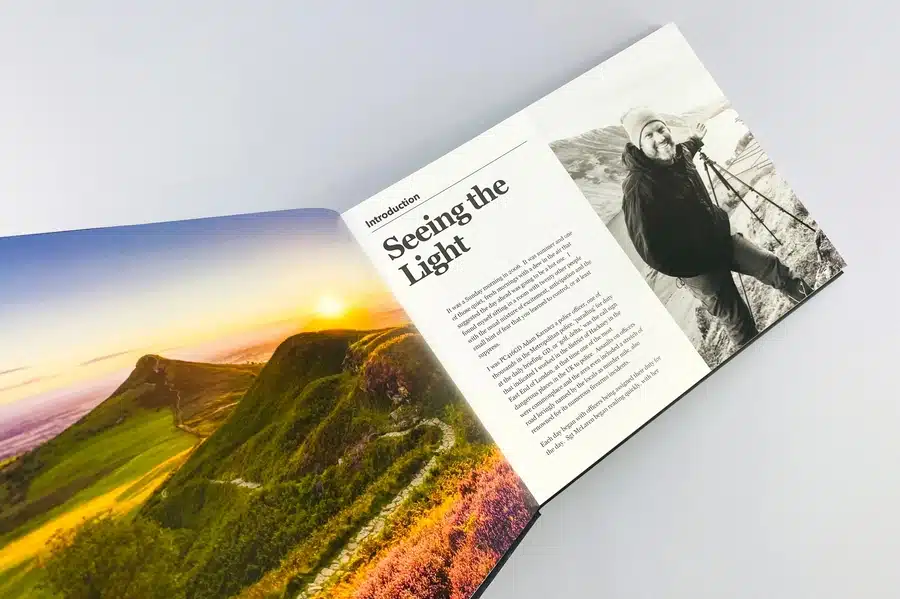
Personalising your photo book involves more than selecting images and text. It's about showcasing your unique style, creating a cohesive theme, and paying attention to details like fonts, colours, audience, embellishments, and purpose. Balancing text with photos is key to crafting a captivating narrative in your photo book.
When creating a photo book with text, match fonts and colours to your theme for visual coherence. Consider the event—for children's birthdays, choose vibrant colours and fun fonts; for weddings, opt for elegant fonts and light colours. Colours evoke emotions—blues for calmness, reds for passion. Consistency is key—use a consistent colour palette and limited fonts for a cohesive look that enhances visual appeal while maintaining readability.
Tailor the tone to suit the intended readers, whether it's a family album, travel photobook, or wedding album. Align captions with the book's purpose, be it storytelling a journey or capturing special moments. Engage your readers emotionally to enhance their connection with your book.
Balancing text and photos in your photo book is crucial for visual appeal. Avoid overcrowding pages with too many elements. Place text strategically to complement the photos, creating a seamless connection. Maintain a balance between picture-heavy and text-heavy pages for variety and reader interest. Keep the layout clean to enhance the viewing experience.
Creating a quality photo book, especially the best one with text, opens up endless possibilities for including beautiful photos printed on glossy photo paper. These can be travel books rich in stories, life event books capturing emotions, or family recipe books preserving heritage. See how combining beautiful photos with pictures and text enhances the narrative for a more engaging experience.
A travel photo book goes beyond stunning landscapes, sharing your experiences and stories. Combining photos with engaging text transforms it into a memory keepsake with travel logs, surprising encounters, facts, or amusing anecdotes. Supportive narratives bring your photos to life, creating exciting stories for your readers.
Life event photo books capture sentimental moments like birthdays, weddings, and baby showers, preserving precious memories and special times. Combining photos with text adds depth to the celebration. For example, in a wedding photo book album, include the bride's emotions as she walks down the aisle. Narratives alongside photos of your baby's first birthday convey the excitement and joy of the occasion. These personal touches preserve events and the associated emotions and stories close to our hearts.
A family recipe or heritage photo book blends photos with text, like a curated collection of grandma's secret recipes alongside images of the dishes. Each page combines a photo of the dish with ingredients, cooking steps, and family stories. It's about sharing love through food, preserving traditions, and passing them down. This book becomes a unique heirloom and culinary guide that connects you to your roots.
Looking to create a stunning photo book with text? Ex Why Zed makes it simple and enjoyable. Our intuitive platform offers a variety of pre-designed templates that perfectly balance photos and text. Whether capturing memories, telling a story or showcasing a portfolio, Ex Why Zed’s easy-to-use tools ensure a professional, personalised result. Start crafting your photo book masterpiece today! For inquiries or support, contact us now and bring your vision to life with Ex Why Zed!
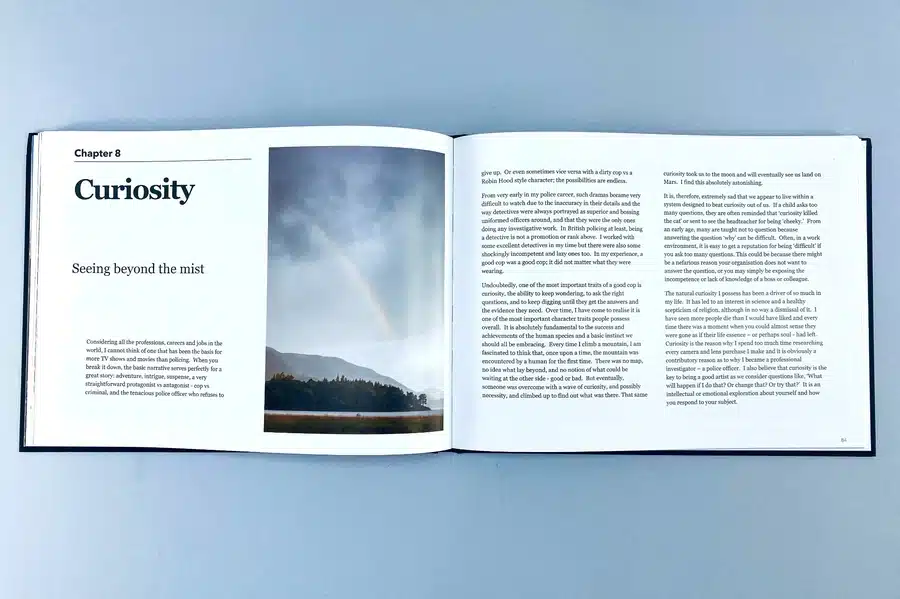
Creating a personalised photo book with your text adds depth to your story through memorable pictures and narrative, as well as on every page of your photo book. Following simple steps and crafting text carefully can transform your photo book into a vibrant, emotional journey. Choosing the right template, fonts, and colours makes creating a personalised photo book more effortless than ever, helping you relive memories and express creativity in an elegant keepsake.
Though there's no fixed rule, moderation is essential. Your text shouldn't overshadow your images. Instead, it should amplify the story your photos are telling. While some pages might demand lengthy narratives, others could do with a few lines or a single word; it's all about balance.
Choosing font size and style primarily depends on your photo book’s overall theme, layout, and intended readability. Keep the font readable, complementary to your images, and consistent throughout the book. Also, balance decorative fonts for headings and simple ones for body text.
Yes, most photo book creation platforms allow you to add or modify text on an existing design via a mobile app. The software often provides an 'Add text' button or similar option, which you can use to insert new text boxes into your layout.
Imagine holding your own comic book in your hands, its pages filled with characters and stories you’ve brought to life. It’s an exciting prospect, but the technical aspects of printing can initially feel overwhelming. From choosing the right paper to understanding print layouts and binding options, the process may seem complex, especially for new publishers.
This guide simplifies each step, helping you turn your vision into beautifully printed comic books. By the end, you’ll be ready to print a professional-looking comic without unnecessary costs or complications. Let’s dive in and bring your comic book dream to life!

Your journey to bringing your comic to life begins with preparing it for printing. This stage can feel overwhelming, especially when faced with decisions about size, layout, and technical details like trim lines, bleed, and important content in quiet areas. These elements might seem minor, but they’re crucial for ensuring your printed comic matches your creative vision.
While modern printing techniques have made the process more accessible, a solid understanding of these basics helps avoid common pitfalls. It ensures your comic looks as stunning in print as it does in your imagination.
Designing a captivating comic requires thoughtful planning and a clear understanding of the narrative flow. Here are some tips that can help with how to print your own comic book:
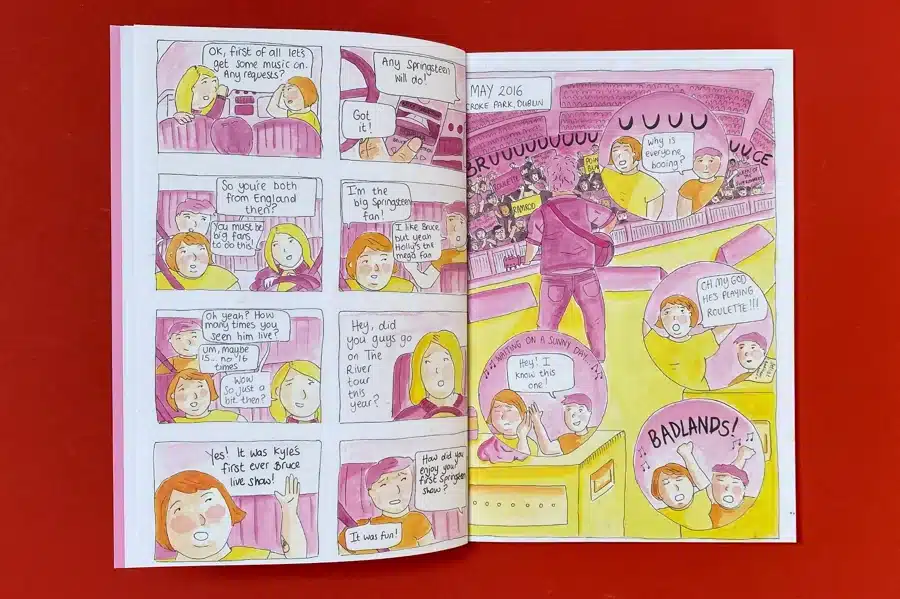
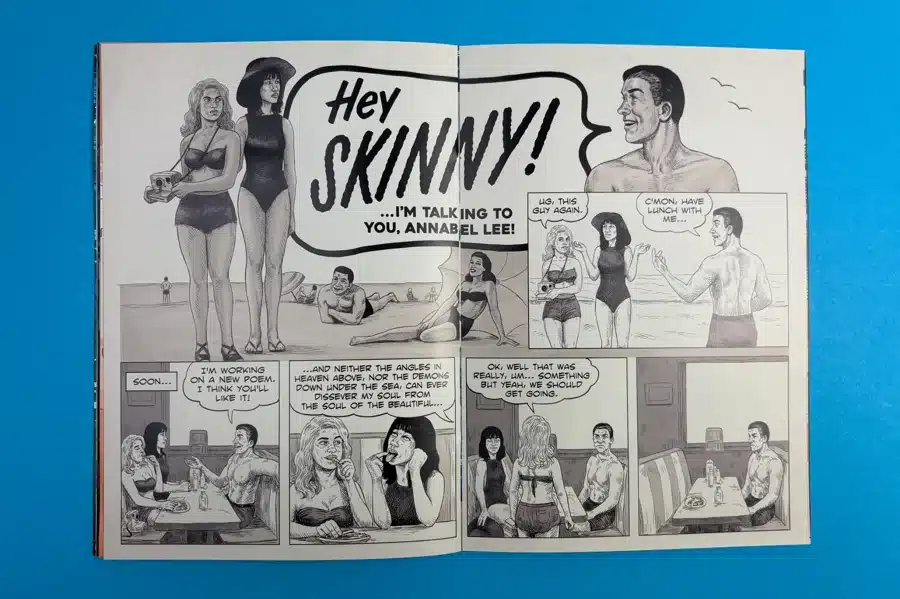
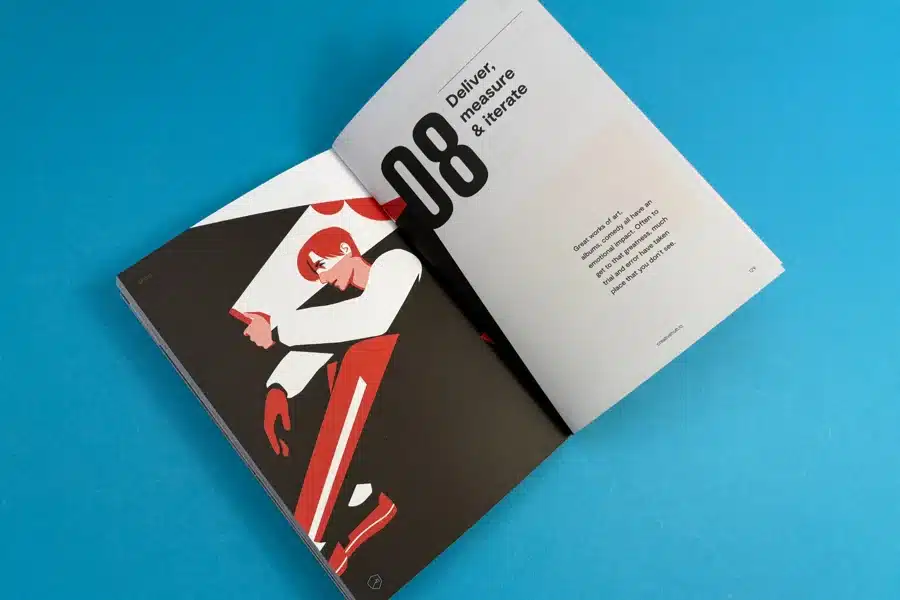
Choosing the right format starts with deciding the size of your comic. In the UK, standard comic book sizes include A4 (8.3" x 11.7") or the smaller B5 (6.9" x 9.8"). The size you select can greatly impact your comic's market appeal and how it’s displayed in comic book shops.
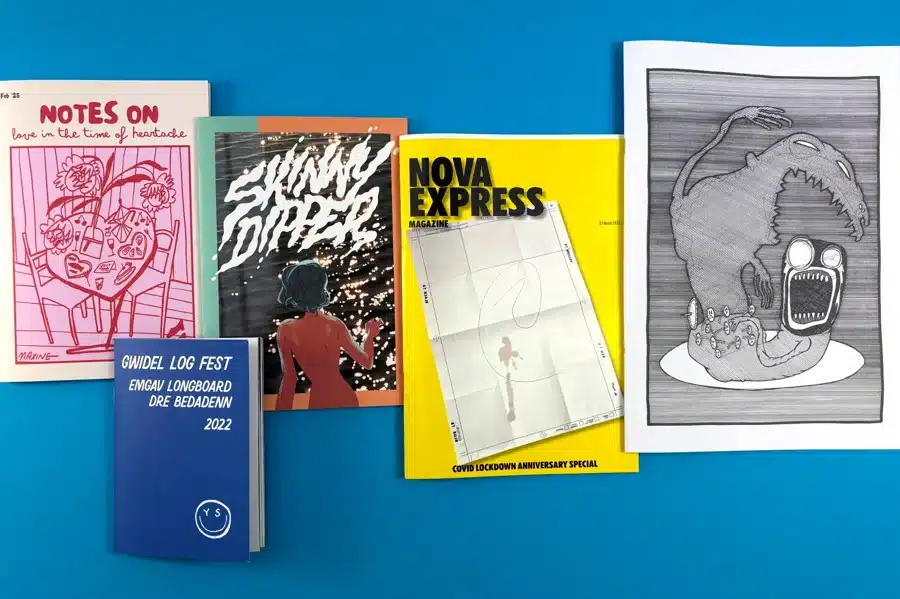
Here’s a look at what each size has to offer:
| Comic Sizes | Width (mm) | Height (mm) |
| UK Standard | 157 | 240 |
| US Standard | 170 | 260 |
| Manga Standard | 127 | 191 |
| B6 | 125 | 176 |
| DL | 99 | 210 |
| 210 square | 210 | 210 |
| A4 | 210 | 297 |
| A5 | 148 | 120 |
Custom sizes may need additional adjustments, so it’s wise to settle on your preferred format early in the process.
Choosing between colour and black-and-white (monochrome) printing is important in the comic printing process. Here’s what to consider:
Get in touch with Ex Why Zed and start turning your comic into reality. Get a Quote
Understanding the concept of bleed, trim, and quiet (or safe) zones is essential when designing a print-ready comic. These elements help ensure precise printing and proper design placement.
Here’s a simplified representation of these key aspects:
| Design Area | Description |
| Bleed | Necessary to avoid unwanted white borders in your final product. |
| Trim | This is where your comic will be cut, removing the bleed area. |
| Quiet Zone | Ensure none of your core design elements come within these boundaries. |
The quality and types of paper you choose can greatly affect your comic book's display, durability, and overall look and feel, especially if you want a sketch cover.
Different paper types can create various aesthetics, from the shiny gloss often seen in superhero comics to the more rustic charm of vintage styles. Additionally, your paper choice's weight, texture, and finish impact how readers experience your comic. Let’s explore the different paper grades and how to choose the right one for your comic.
Paper quality is categorised into different grades, each with its own unique characteristics. Here are the most common ones used in comic printing:
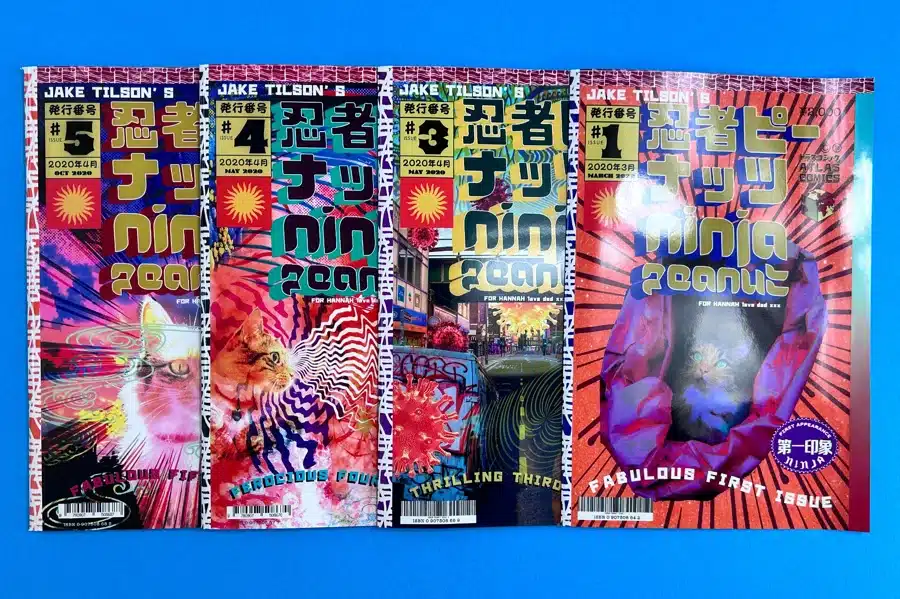
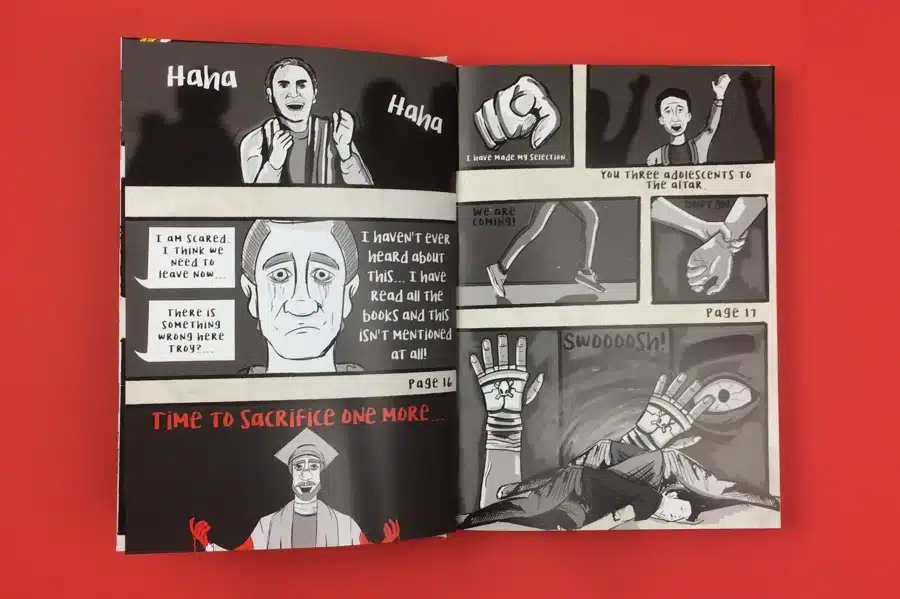
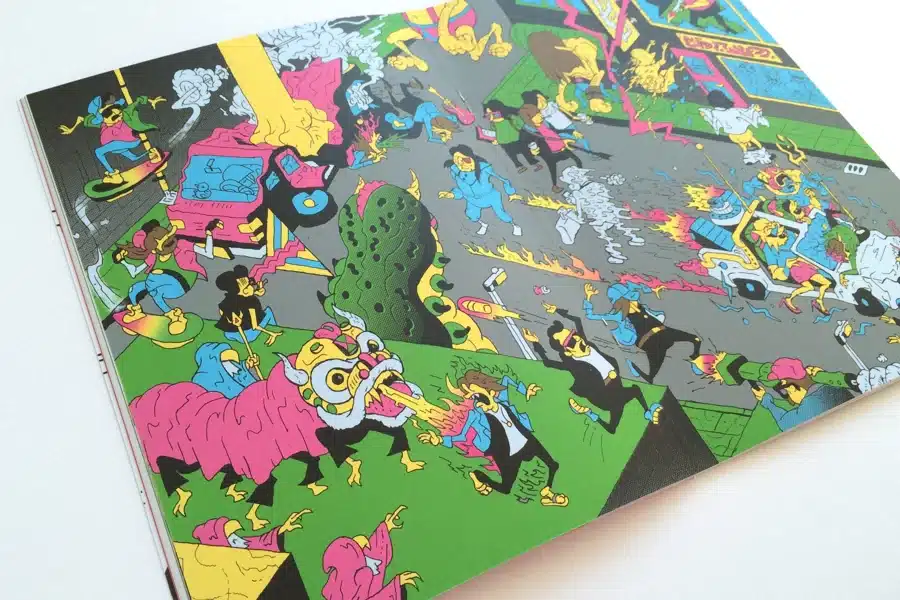
Each publisher can choose from a broad range of weights for every type of paper, affecting the thickness and robustness of the pages.
| Paper Type | Description |
| Gloss | Offers shiny and visually striking results; Best for vibrant, full-colour comics. |
| Silk | It balances colour saturation and readability. It is popular for its affordability and versatility. |
| Uncoated | Delivers a rustic and tactile feel, Ideal for vintage-style or black-and-white comics. |
There’s no hard-and-fast rule for choosing the best paper for your comic. Your decision should reflect your specific goals, your audience's preferences, and your budget.
If you're aiming for a classic comic look with a shiny, vibrant cover, gloss paper for the cover and satin for the interior pages would be an excellent combination. Uncoated paper is ideal for a more eco-friendly, unique, and rustic feel, especially for monochrome comics. If your comic features heavy ink coverage or lots of dark colours, opting for a thicker, higher-quality paper is recommended to prevent any see-through or bleed-through issues. The success of your comic largely depends on how well your paper choice aligns with the overall experience you want to offer your readers.
Ex Why Zed provides a wide range of high-quality paper options tailored to suit every comic book style, whether you’re looking for a bold, glossy finish or a subtle, uncoated look for a vintage feel.
Request free paper samples today to choose the perfect match for your comic!
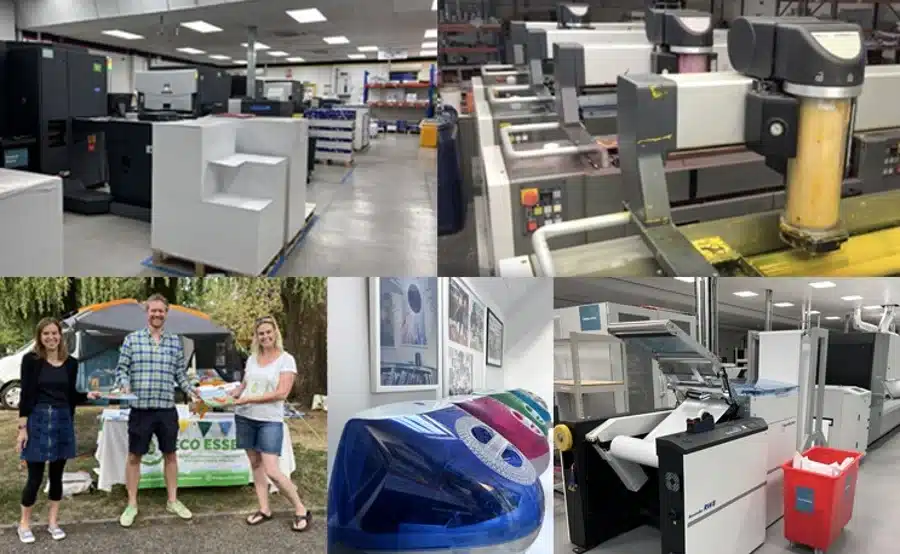
Printing technologies have advanced greatly, introducing various printing methods, each with its own advantages. Two commonly used processes are Digital Printing and Offset Printing, and both can greatly influence the price, speed, quality, and overall production of your comic. Choosing the right method of printing can improve your publication's quality while aligning with your budget. Let’s take a closer look at these two primary printing methods.
Digital printing technology is fast and cost-effective, making it ideal for high-quality short-run print jobs. It works by converting digital files directly into print without the need for plates. Some key advantages include:
However, digital printing may not be the best choice for large print runs, as the costs can rise quickly for higher volumes.
Offset printing, also known as lithography, is a traditional method renowned for its high-quality output. In this process, ink is transferred onto plates, which then press against the paper, creating sharp and vibrant images. Key benefits include:
However, offset printing can be costly and time-consuming for smaller projects.

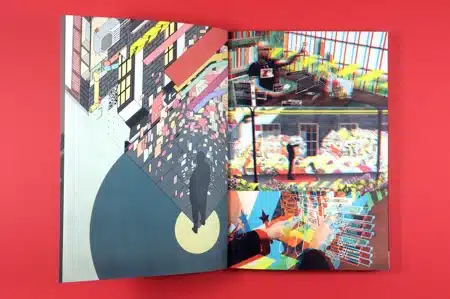
Every comic book is one-of-a-kind, and the perfect printing method depends on your particular requirements. If you're working with a limited budget, launching a new series, or requiring fewer copies, digital printing would be your best bet.
On the other hand, offset printing could offer better cost-effectiveness and higher quality for established publishers requiring large runs. Understanding and aligning your printing needs with the appropriate method will ensure optimal results for your comic book printing project.
Binding is the process of securing loose pages into a book. Primarily, three binding methods are used for comic books:
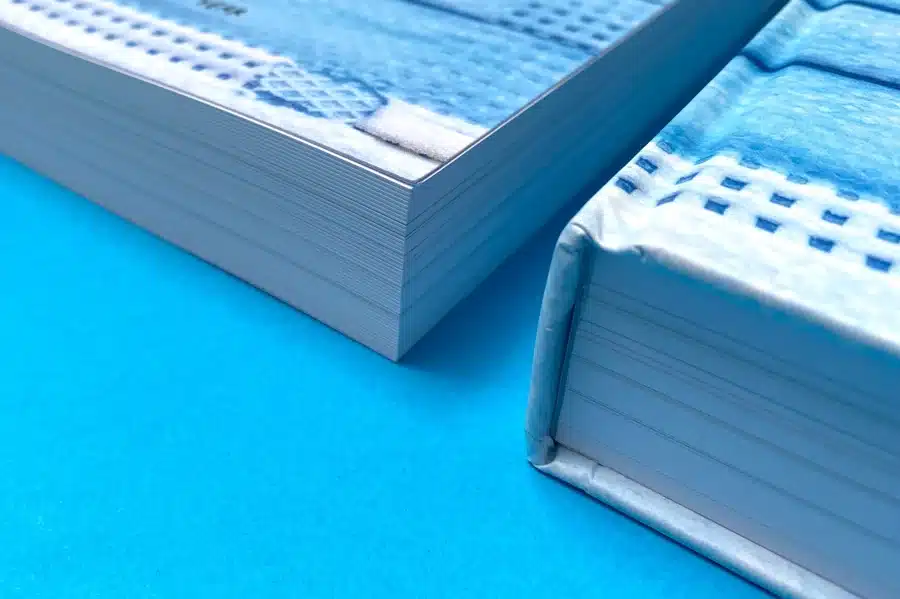
Your preferred binding option primarily depends on the page count of your comic, its overall aesthetics, and how you want your readers to experience it.
Let us understand each of these binding methods in detail to aid in choosing the one that suits your comic book the best.
Staple, or saddle-stitched (also known as saddle-stitched) binding, is one of the most common binding methods. It involves folding the pages of the comic in half and fastening them together with staples in the centrefold. Key points of this method include:
| Application | Consideration |
| Number of Pages | Up to 64 pages |
| Pricing | More economical |
| Appearance | Flat spine, no printing on spine |
Perfect binding offers a higher-end look, making it ideal for perfect-bound comic books, graphic novels, or anthology collections. This process entails glueing the pages to a flat spine, creating a seamless, square-edged, book-like appearance. It is essential to understand that perfect binding requires a minimum number of pages. Here’s what to note about perfect binding:
| Application | Consideration |
| Number of Pages | Between 40 to 400 pages |
| Pricing | More expensive |
| Appearance | Square spine with printing option |
Hardcover or case-bound binding is primarily used for special editions or collector’s items, presenting a high-quality, robust finish associated with hardcover books. In this binding method, pages are stitched together and then attached to a hardcover. Features of this method include:
| Application | Consideration |
| Number of Pages | Minimum of 40 pages |
| Pricing | Highest cost |
| Appearance | Premium feel and look |

Choosing the right online printing service is just as important as the careful preparation that goes into creating your comic book.
We specialise in printing premium comic books, offering flexibility with no minimum order requirements and the option to print test copies.
Get a quote today and start your journey with Ex Why Zed!
When comparing various printing services, don't fall into the trap of basing your decision solely on pricing. Make sure to consider other factors that could influence the final outcome of your comic book. Here’s a quick guide on what to look for:
| Criteria | Consideration |
| Pricing | Consider quality against cost. Cheaper isn't always better. |
| Experience | Look for a printer with a proven track record in comic book printing, emphasising quality and punctuality. |
| Customer service | Assess response times, ease of communication, and willingness to assist or advise. |
| Additional Services | Some printers may offer extras like online proofing, file checks, and even design services. |
| Delivery options | Check for the availability of standard, express, national, and international delivery options. |
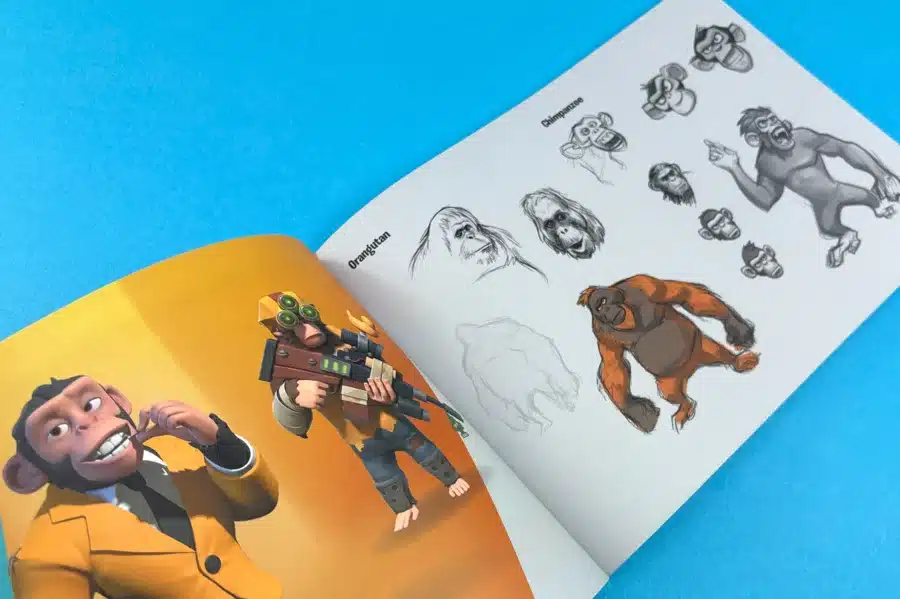
At Ex Why Zed, we take the hassle out of comic book printing. From free paper samples that allow you to feel and see the options firsthand to detailed setup guides and the chance to print a test copy, we ensure your project is set up for success.
Our team is always on hand to offer personalised support and answer any questions, ensuring you’re confident throughout the process. With no minimum order and the flexibility to print just the number of copies you need, you’re in control. Plus, we offer bespoke sizing to make your comic truly unique.
Get a quote and bring your comic into the hands of your readers!
Want to Create a Comic Book That Actually Hooks Readers? Start Here.
Ever wondered what separates a good comic from one that sticks with readers long after the last panel? This deep dive into comic book fundamentals—covering everything from character arcs to panel layouts—cracks open the craft behind visual storytelling that packs a punch.
If your sketchbook is full but your brain feels blank, this guide is the creative jumpstart you need. Packed with 25 genre-spanning comic book ideas—from superhero origin flips to cosmic dream manipulation—this post isn’t just a list, it’s a blueprint for storytelling greatness.
So, You Want to Make a Comic? Here's How to Actually Do It Right
From crafting compelling characters and writing dialogue that snaps, to sketching, inking, colouring and—yes—finally printing your masterpiece, this article is a one-stop blueprint for comic creators at any level.
Whether you’re going digest-sized for a zine-style vibe or stretching into a bold magazine format, the trim size affects everything from layout to visual pacing to shelf appeal. This in-depth guide explores the most common comic sizes—from Golden Age classics (7.75" x 10.5") to compact digest formats (5.5" x 8.5")—and shows how creators can use dimensions as a deliberate storytelling tool.
Printing your comic can be an exciting endnote to your creative process, opening a new chapter in networking and marketing your unique narrative and artistry. Equipped with this comprehensive guide, you now have the tools to print a remarkable comic book using Adobe Photoshop and get your story out there!
Remember, key decisions regarding your comic's format, design, and layout play a significant role in creating an appealing printed product. Your choice of paper types and quality, printing method, binding style, and the right print service are equally crucial in translating your vision onto the pages.
It's important to balance quality, cost, and functionality in your choices throughout the printing process. The first thing to consider is whether you're publishing your first mini-comic or releasing a complete graphic novel. Understanding the ins and outs of printing can transform complexity into an enjoyable, rewarding journey. Now, you're all set to watch your imaginative narratives and characters come to life through a professionally printed comic book!
The cheapest way to get into comics is by using digital printing for small runs, choosing affordable paper, and opting for simple binding like saddle stitch. Saddle stitching or staple binding is more cost-effective than perfect binding which in turn is a lot cheaper than hardback.
Silk and Gloss papers are slightly cheaper than Uncoated.
Editing the number of pages also helps bring the cost down - less paper and printing equals a lower print price.
Sometimes, although comics are generally not printed in A4 size. Standard comic book sizes are usually smaller sizes, like 6.7" x 10.2" in the US or A5 (5.8" x 8.3") in the UK. However, A4 can be used for specific formats or indie projects.
To print a comic book at home, design your pages using software like Adobe InDesign or a similar tool. Print the pages on high-quality paper, ensuring they are correctly formatted. Bind the pages together using stapling, perfect binding, or other DIY methods. Finally, trim the edges for a professional finish.